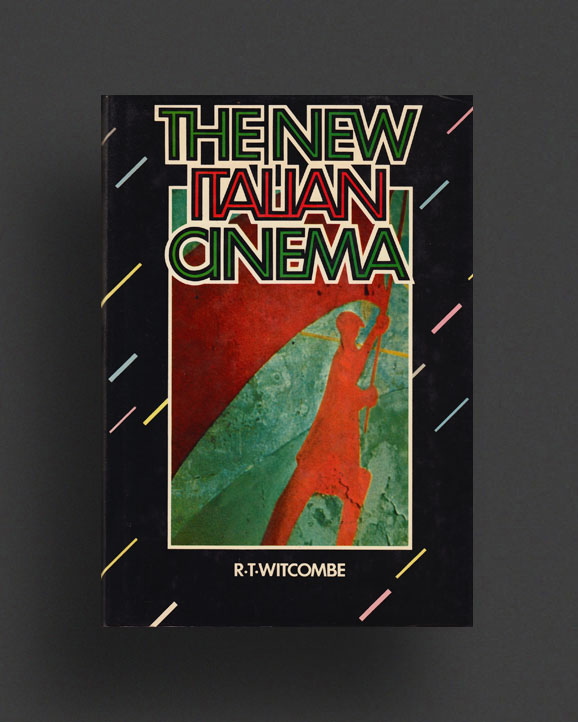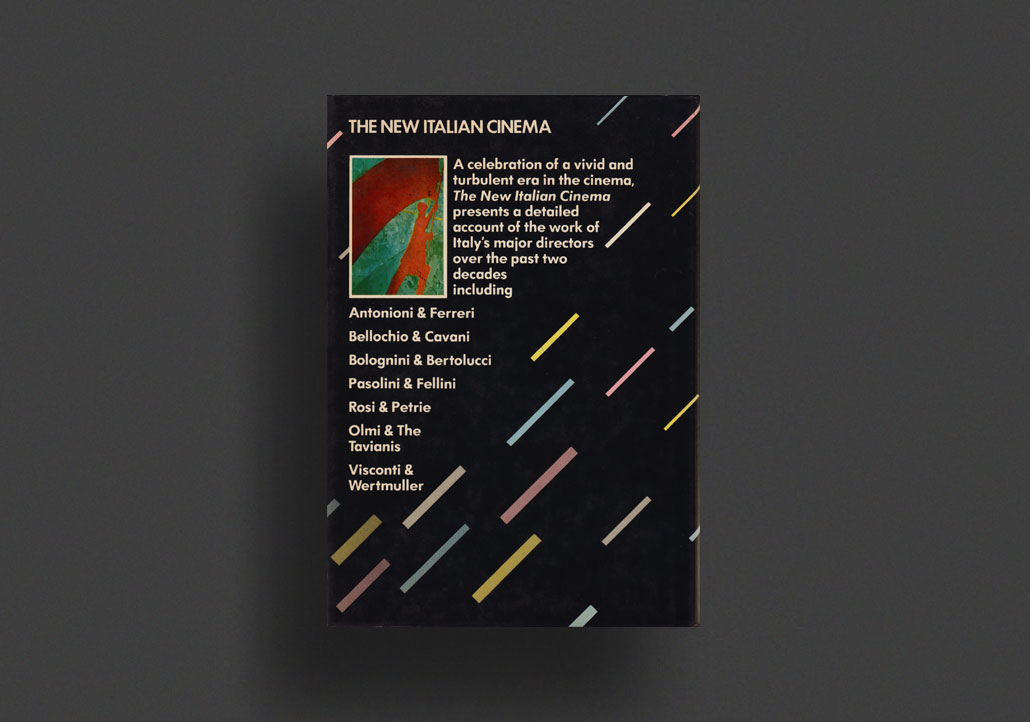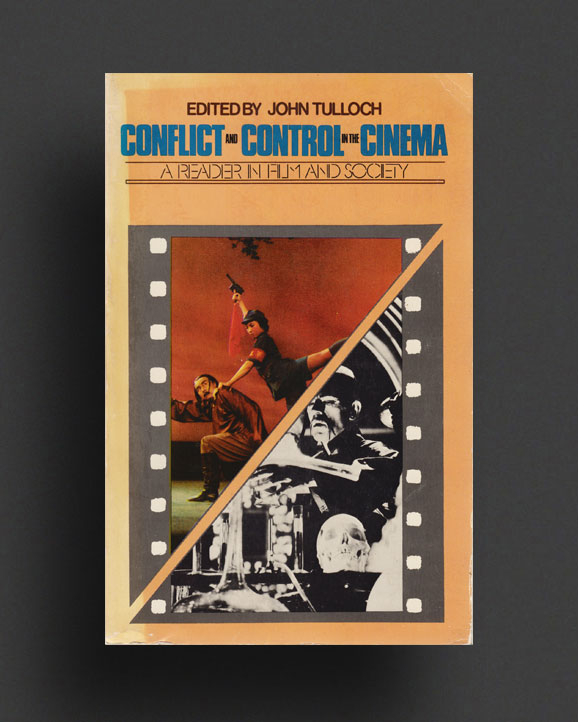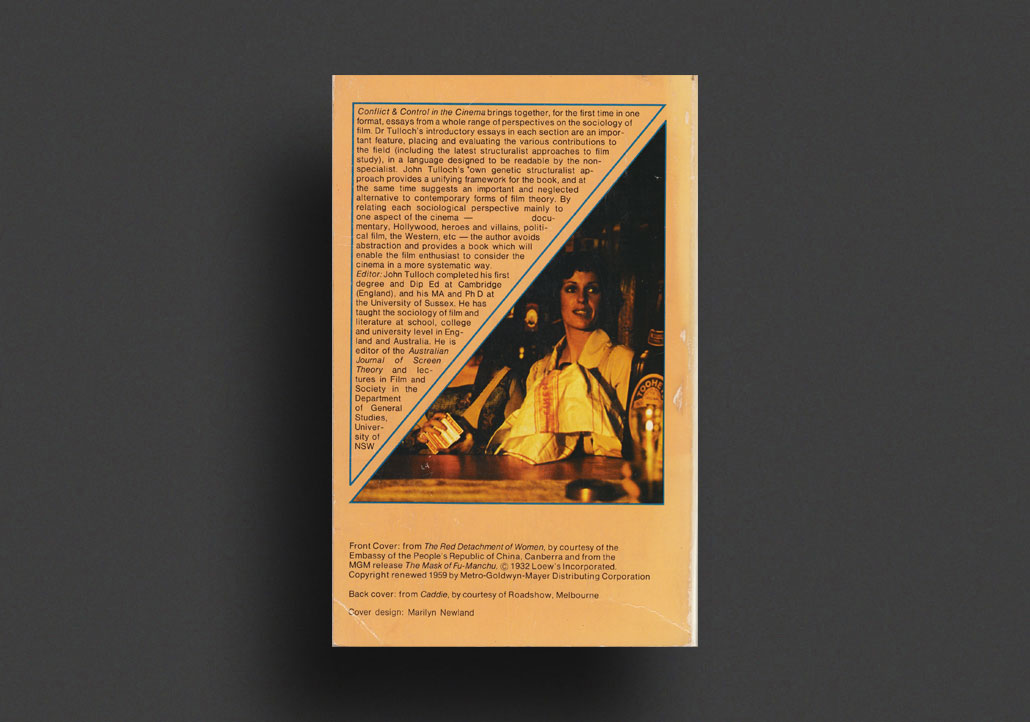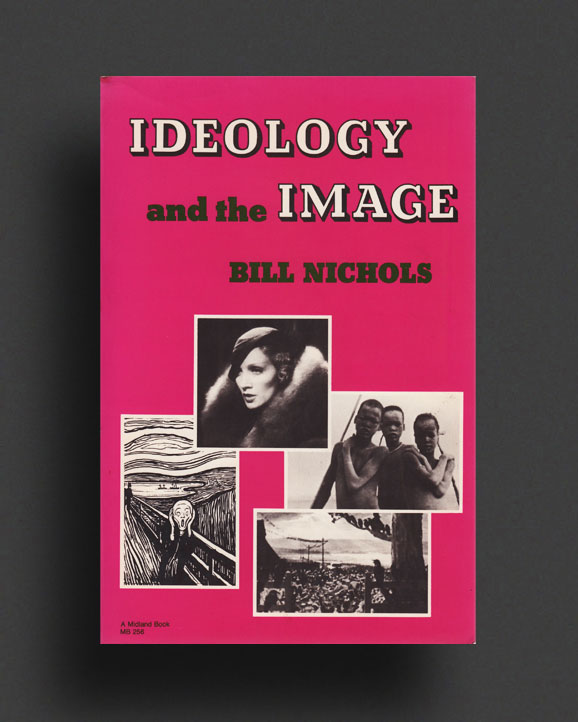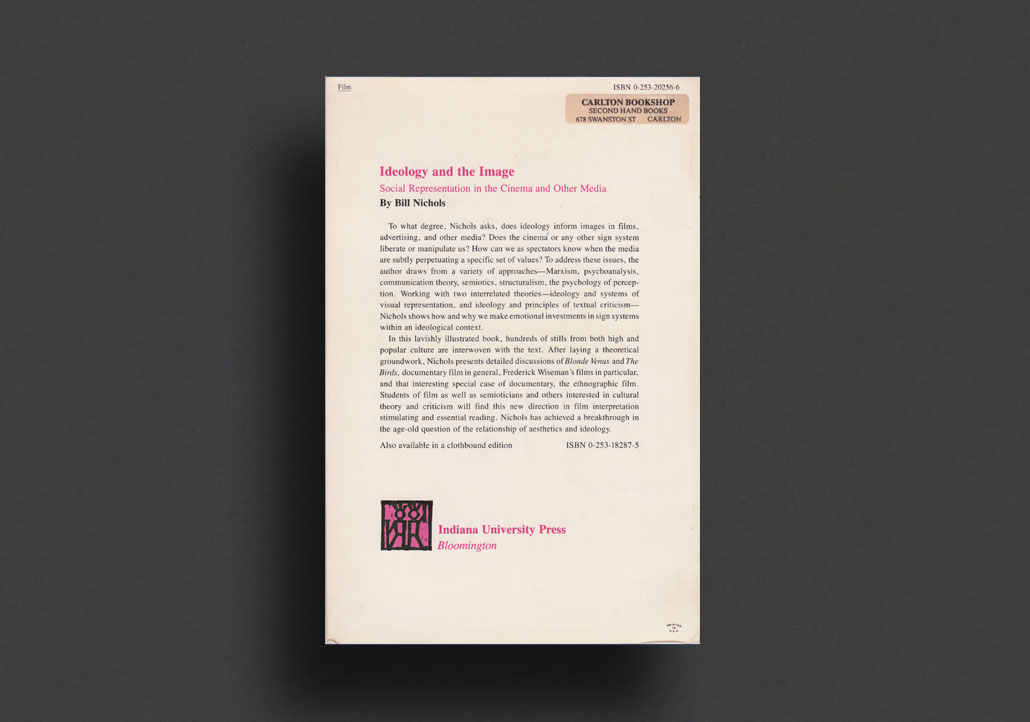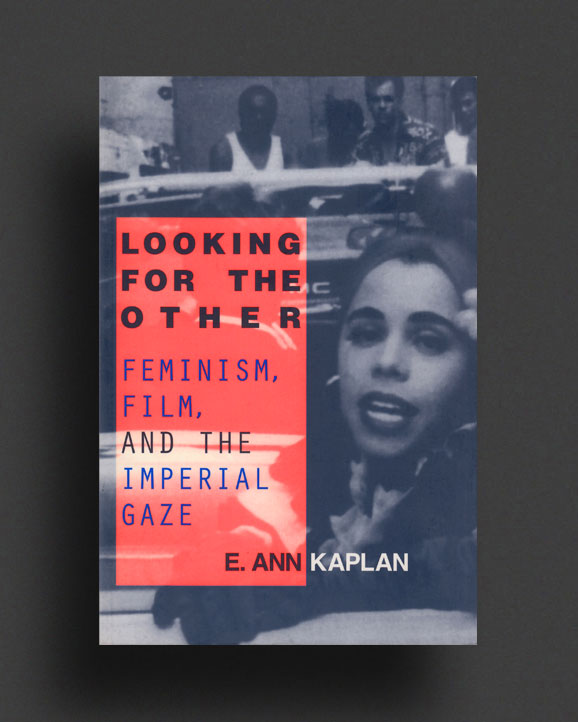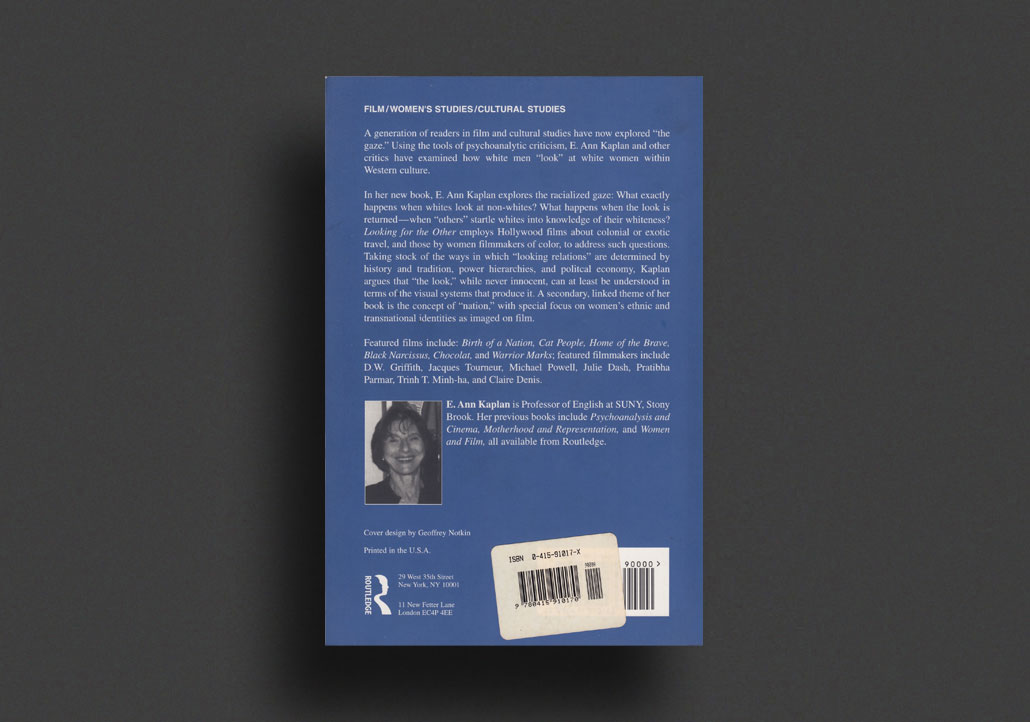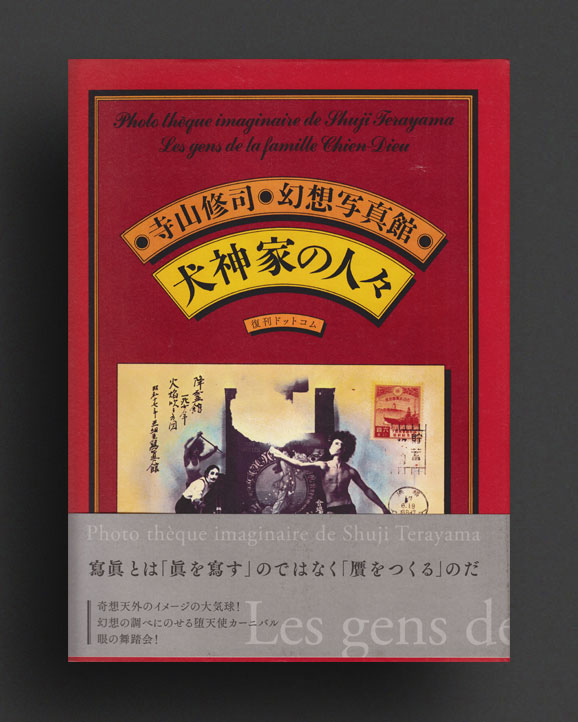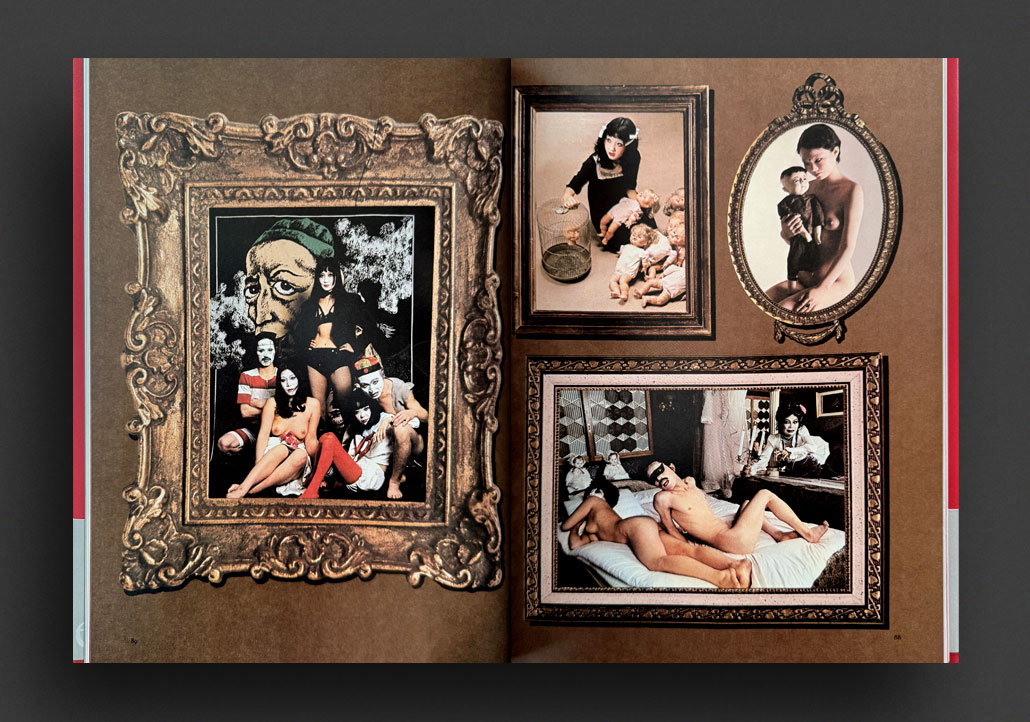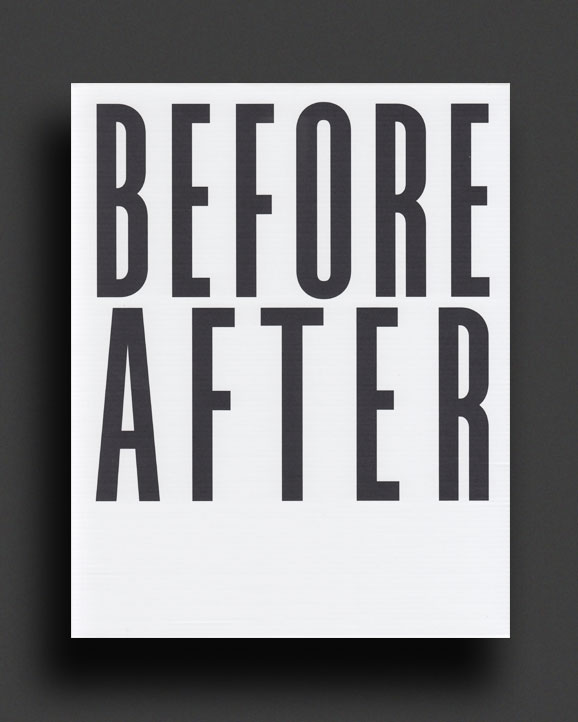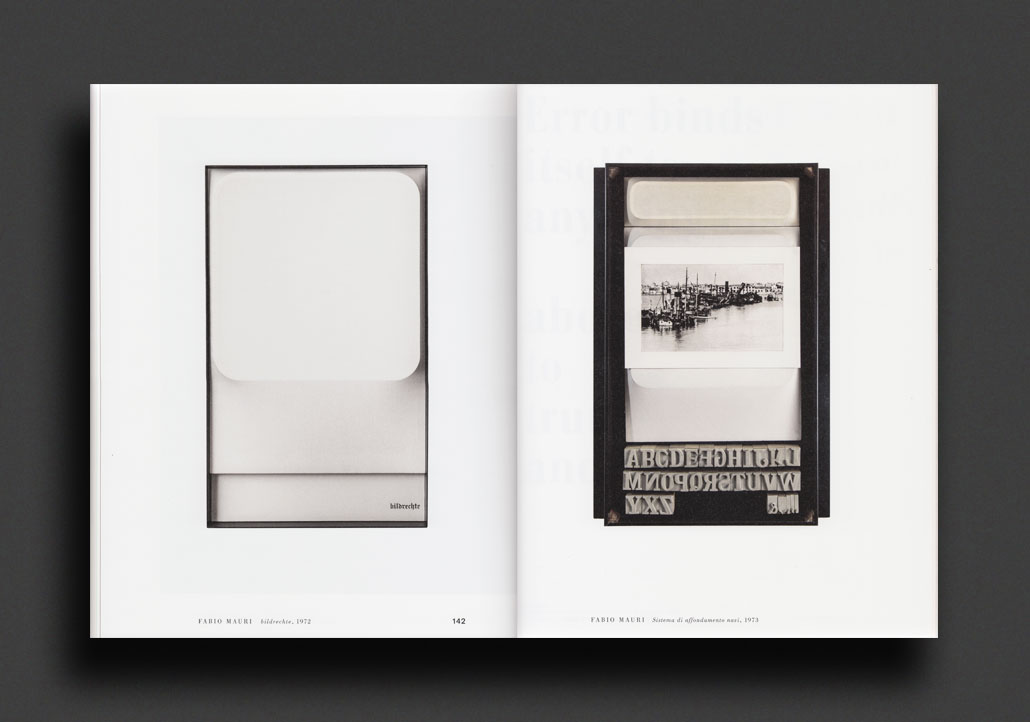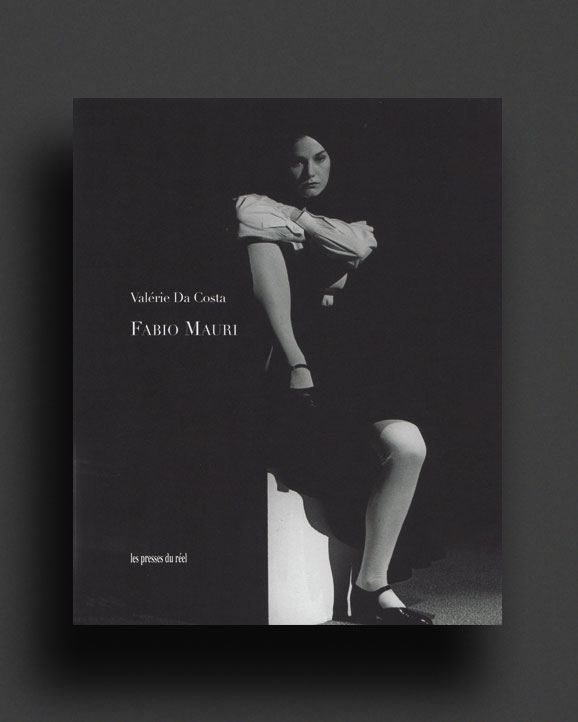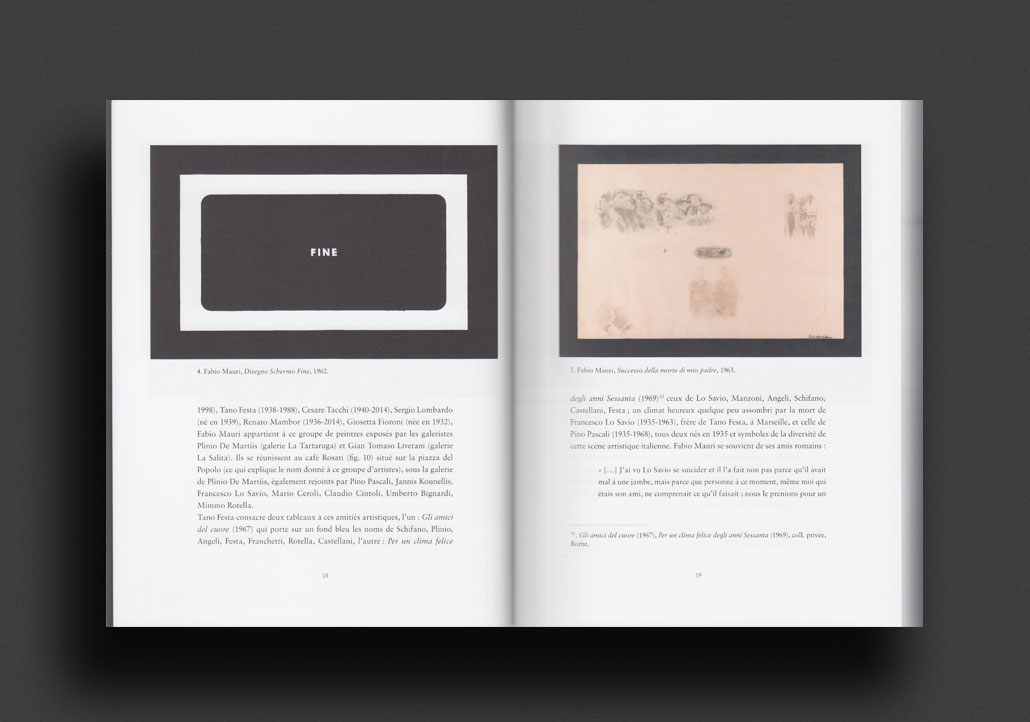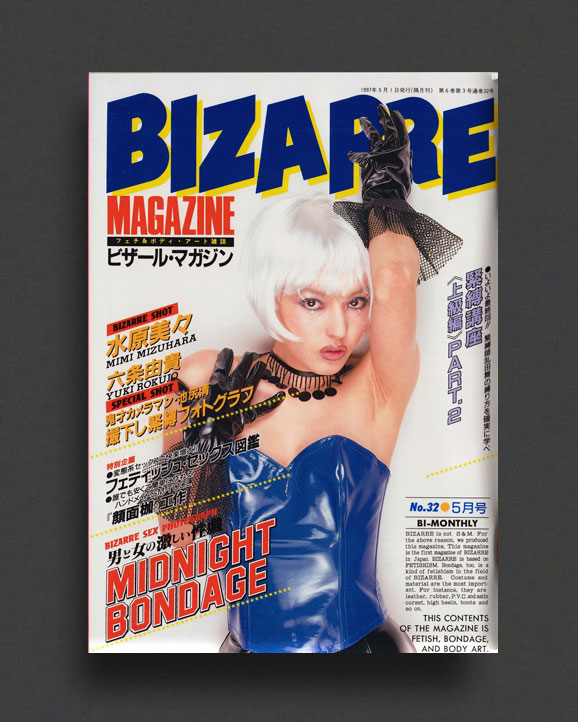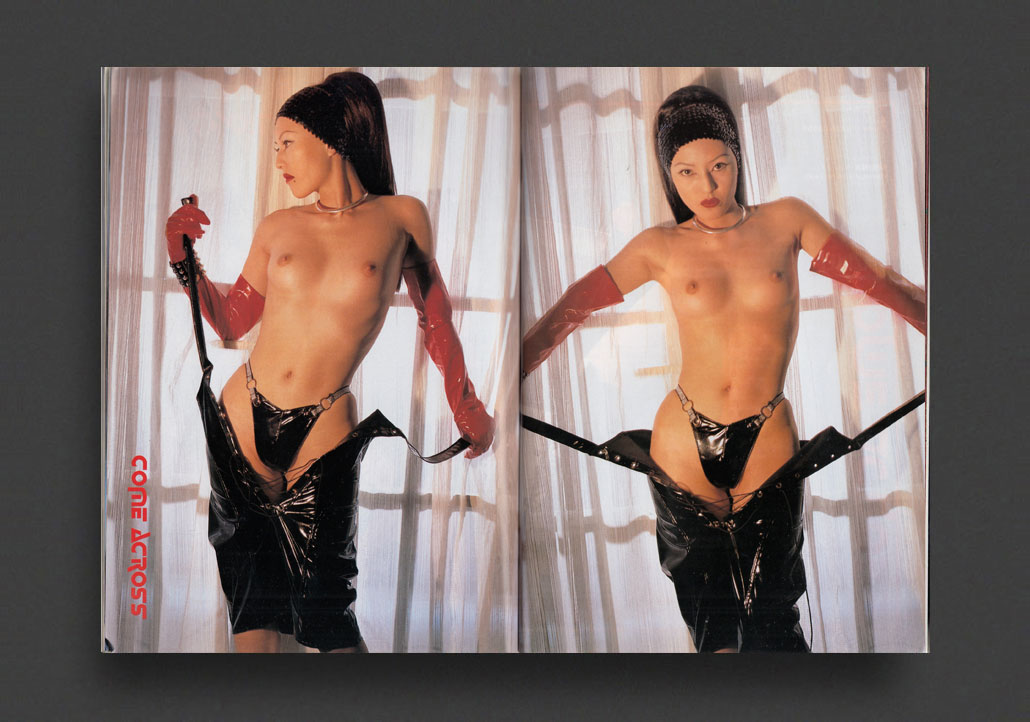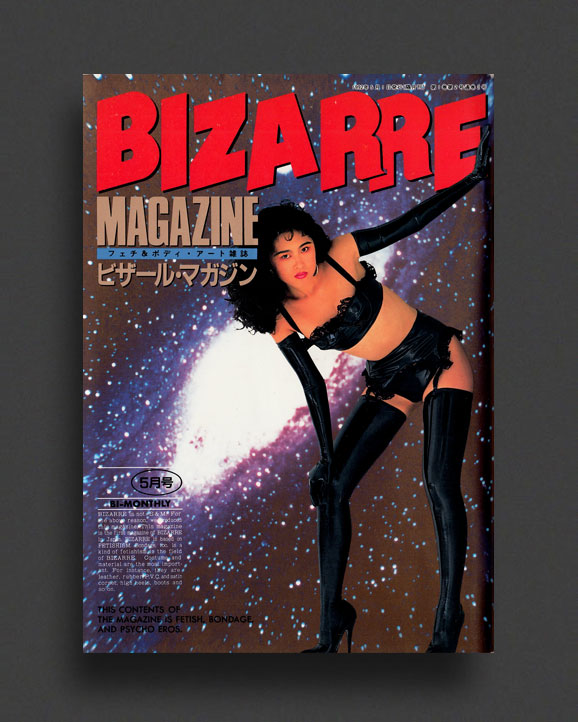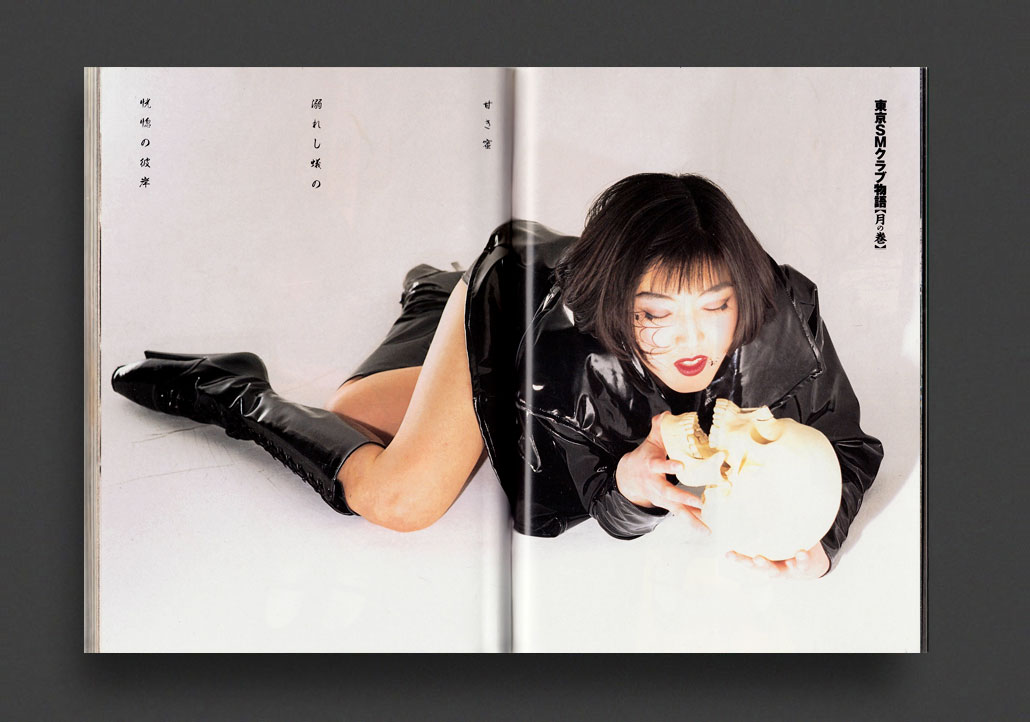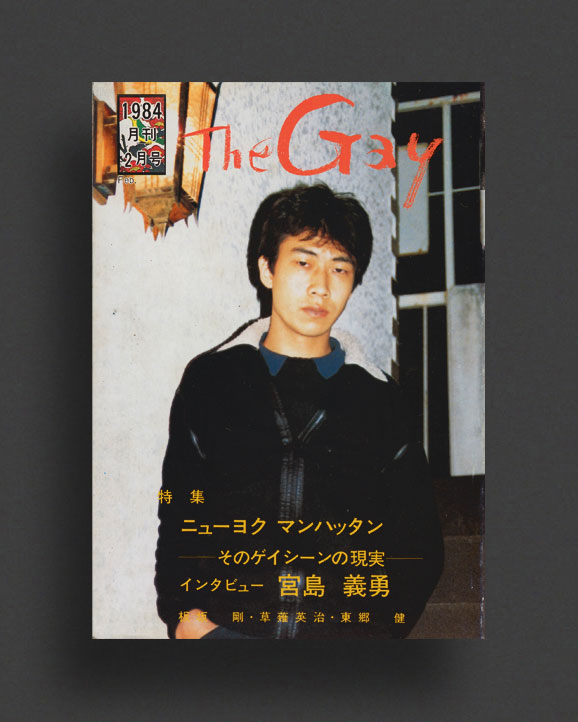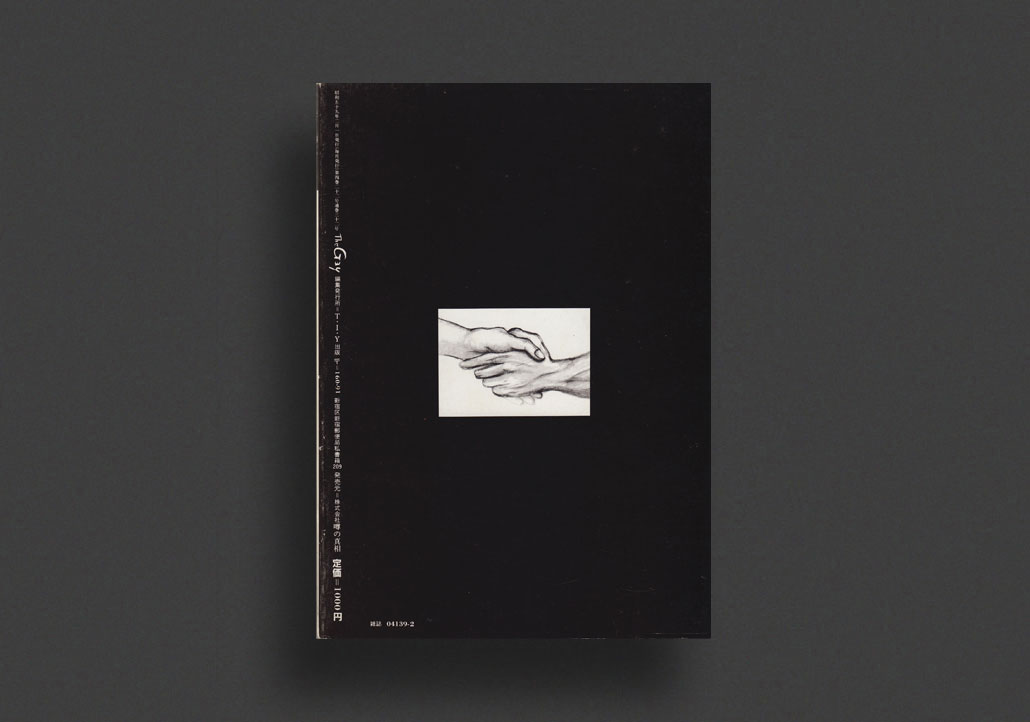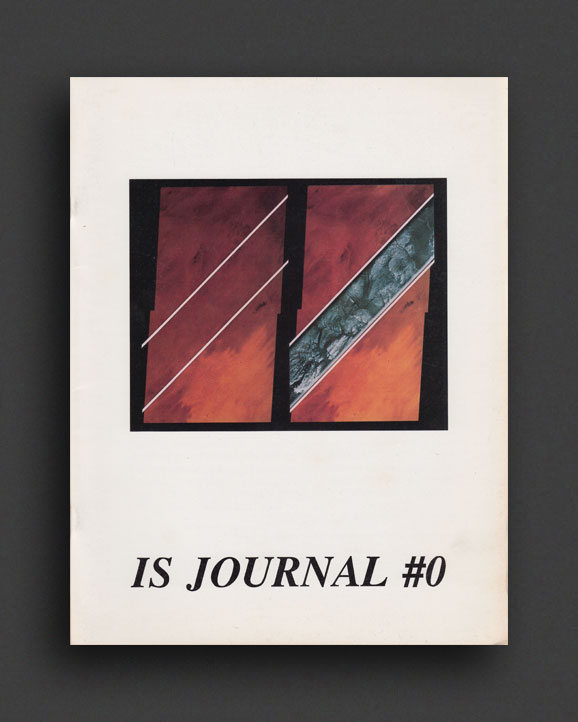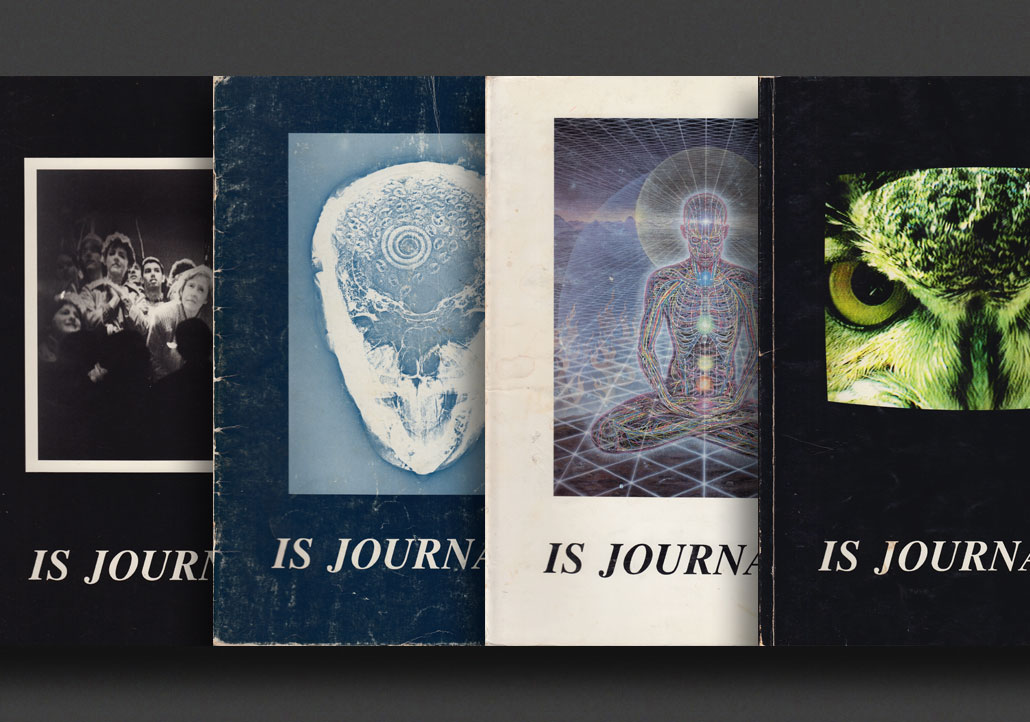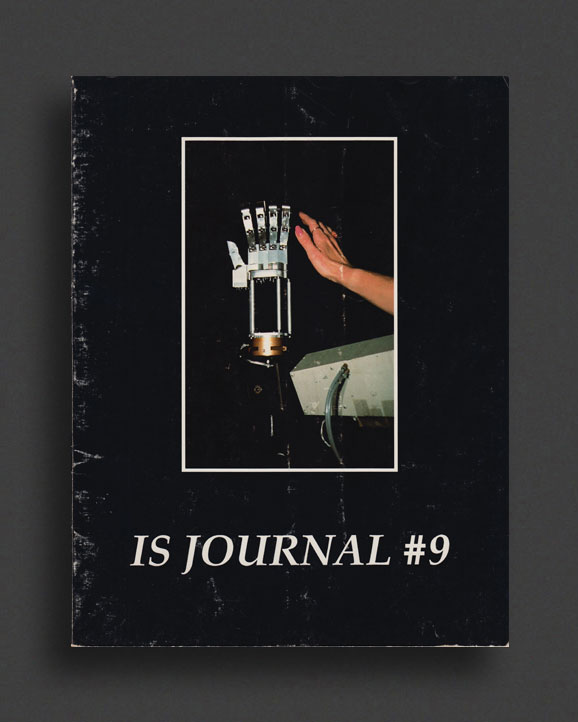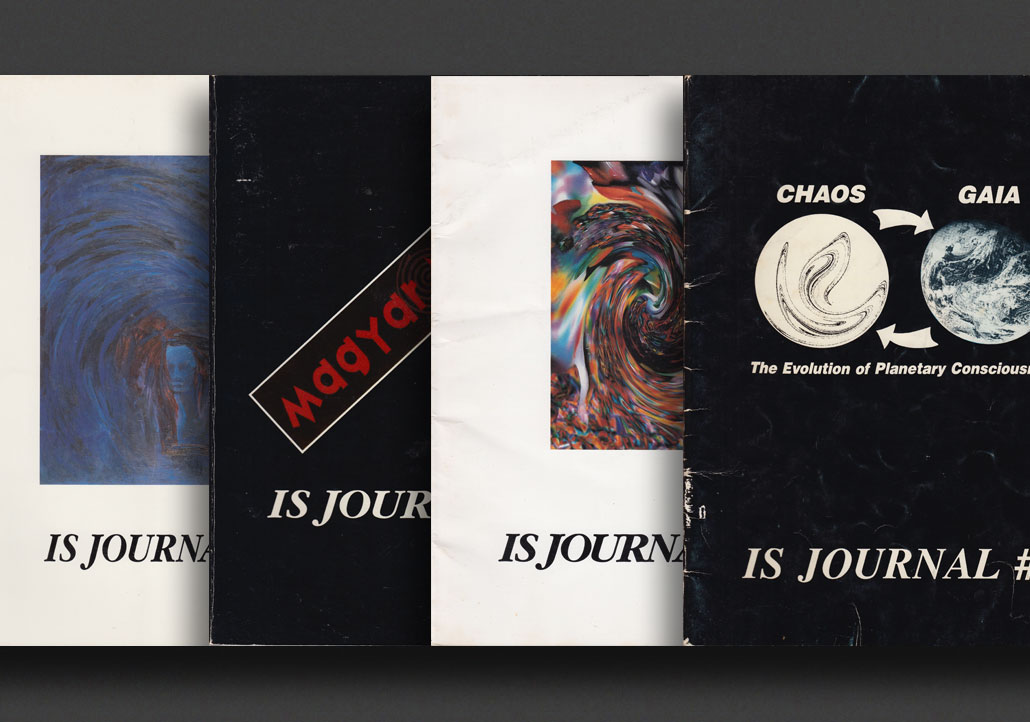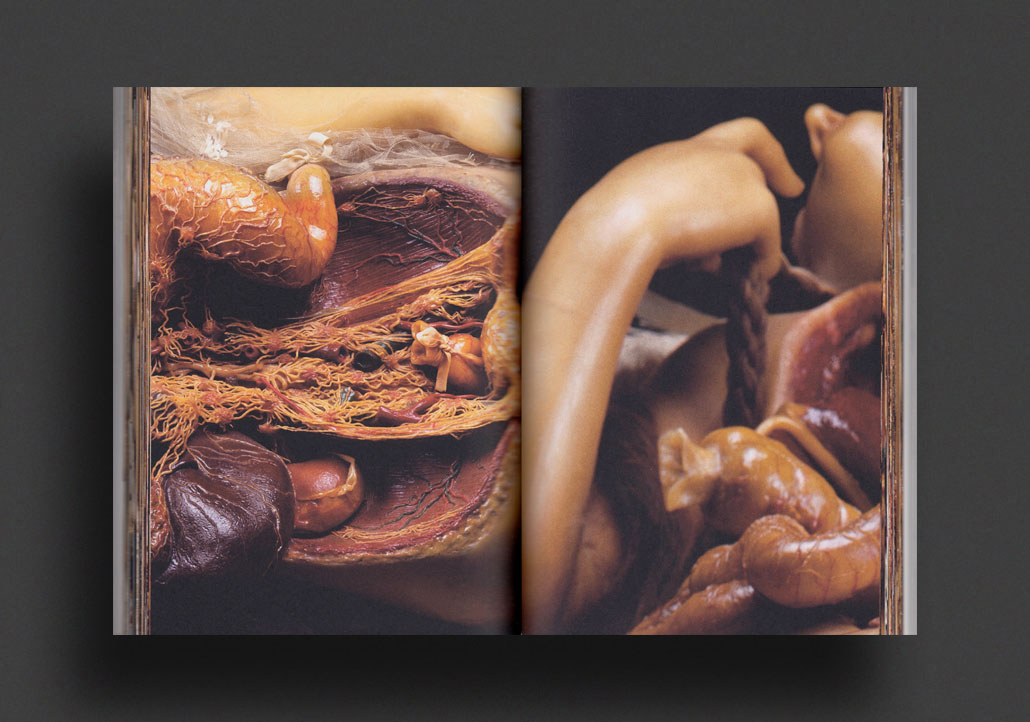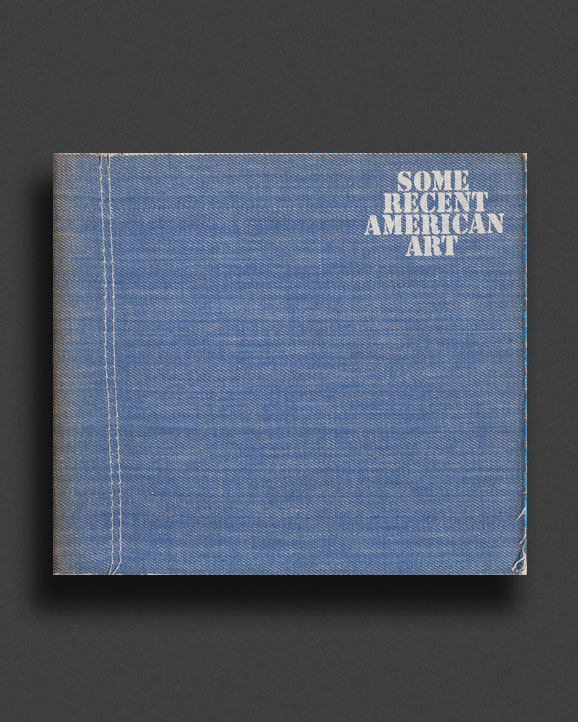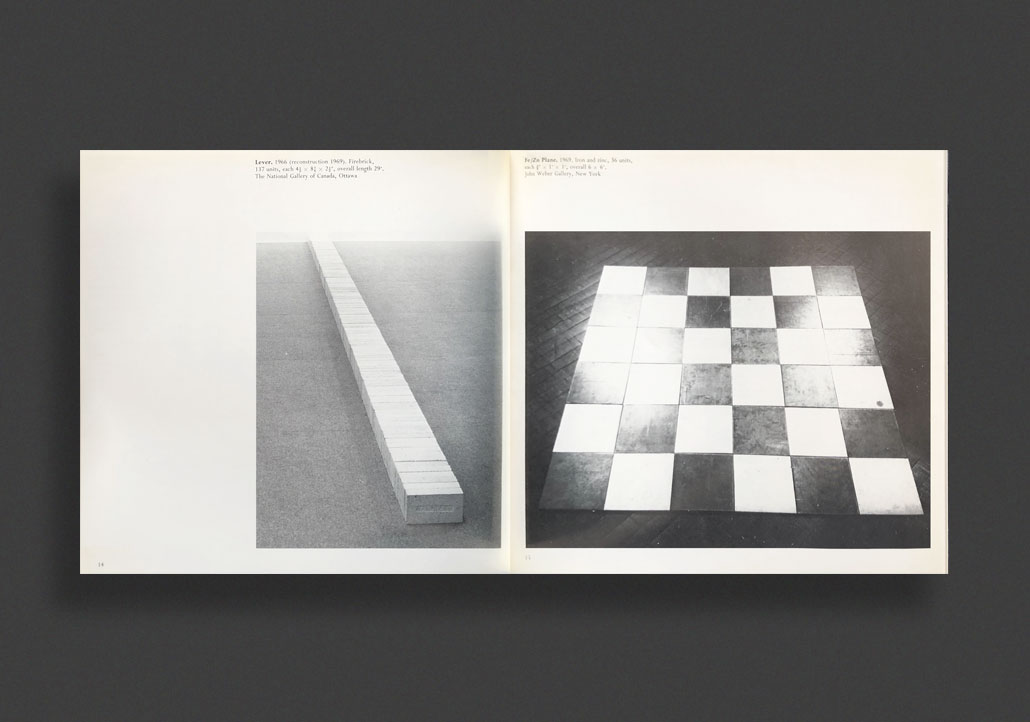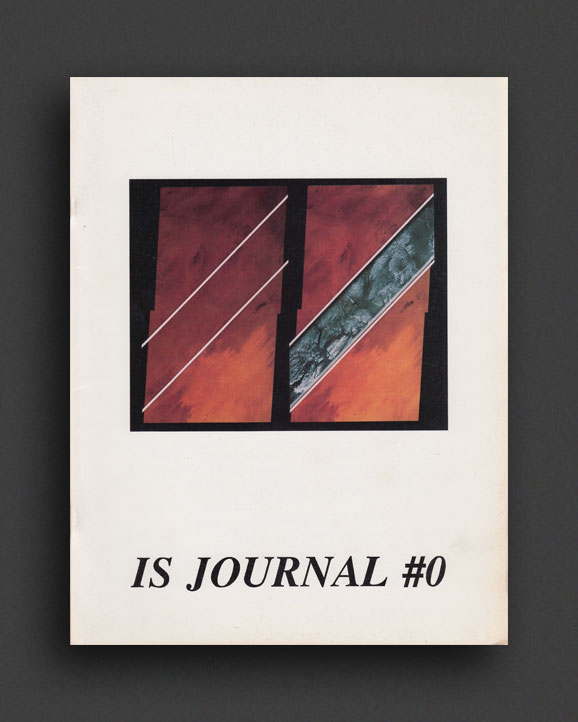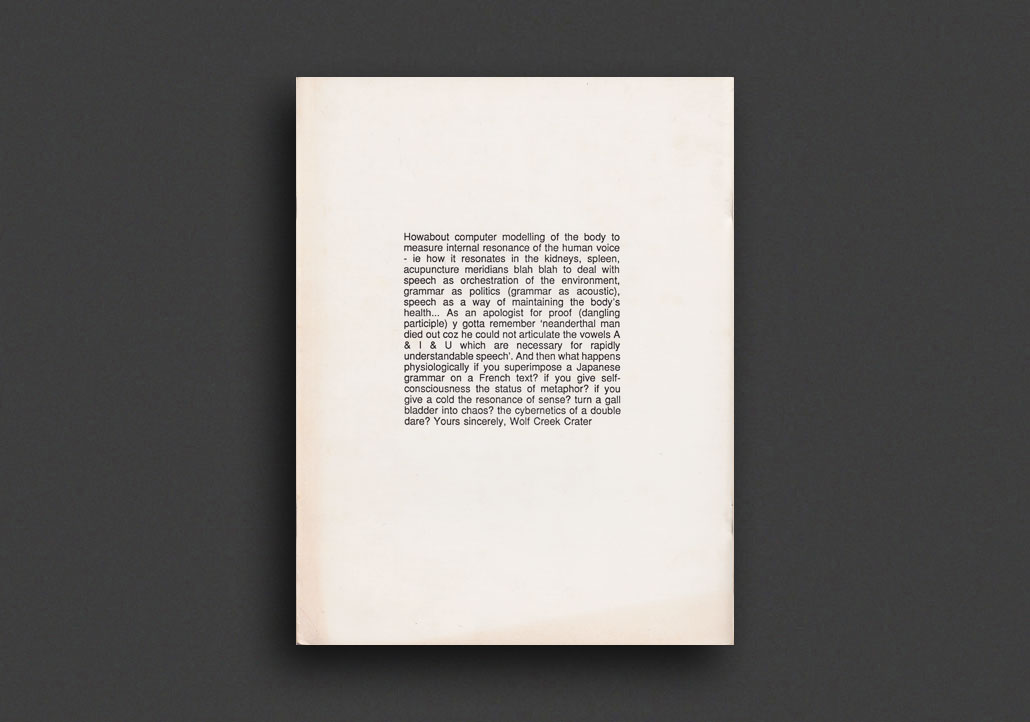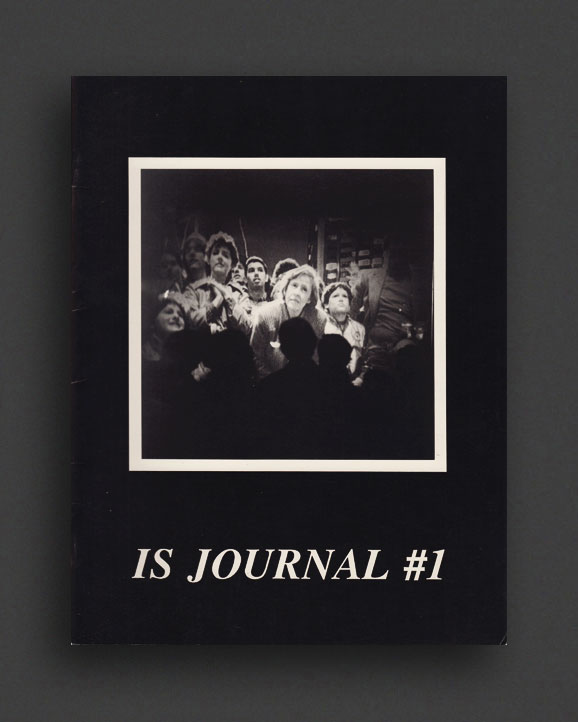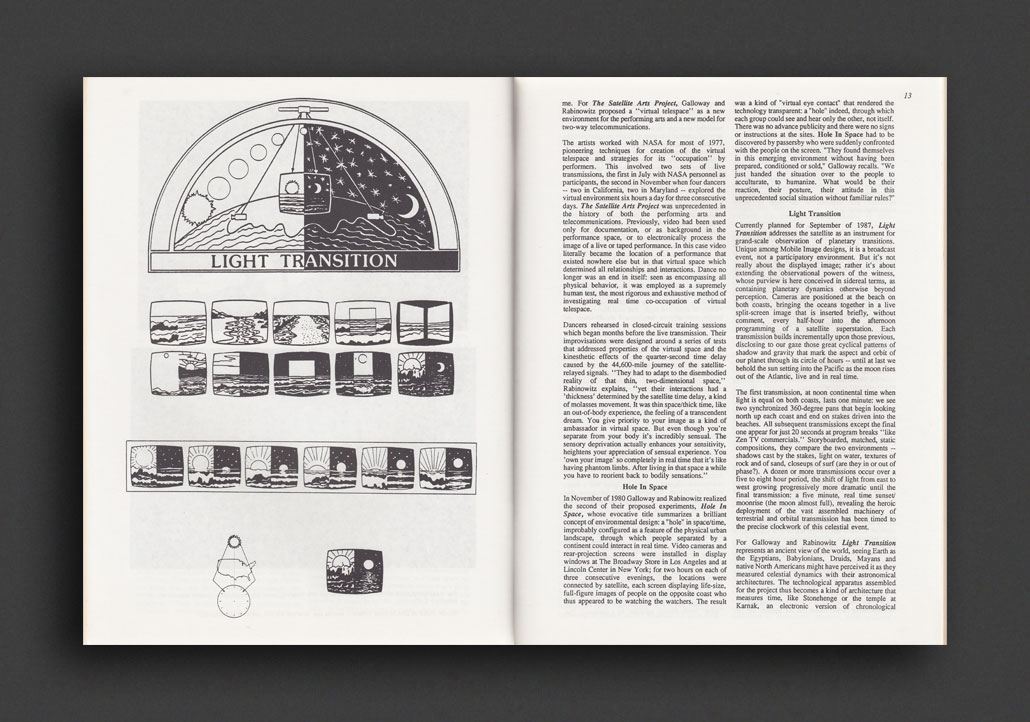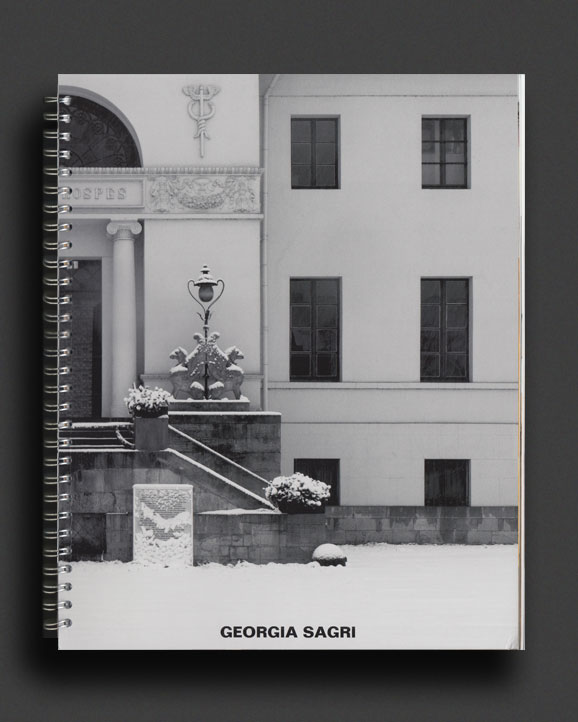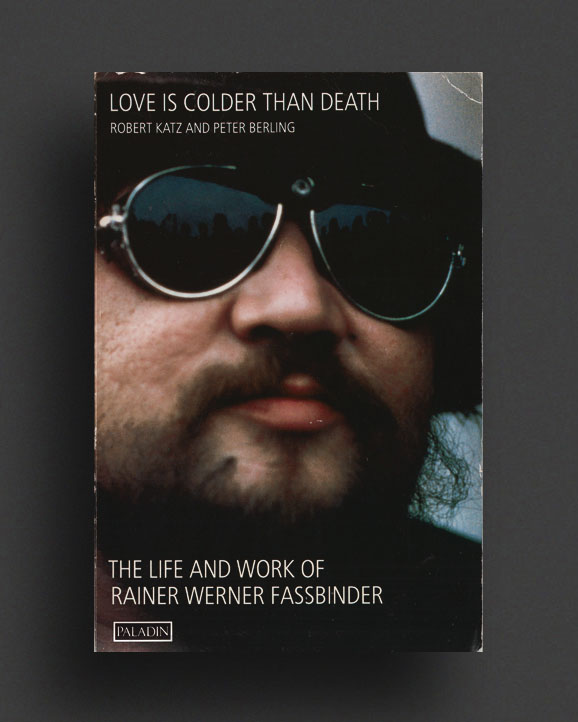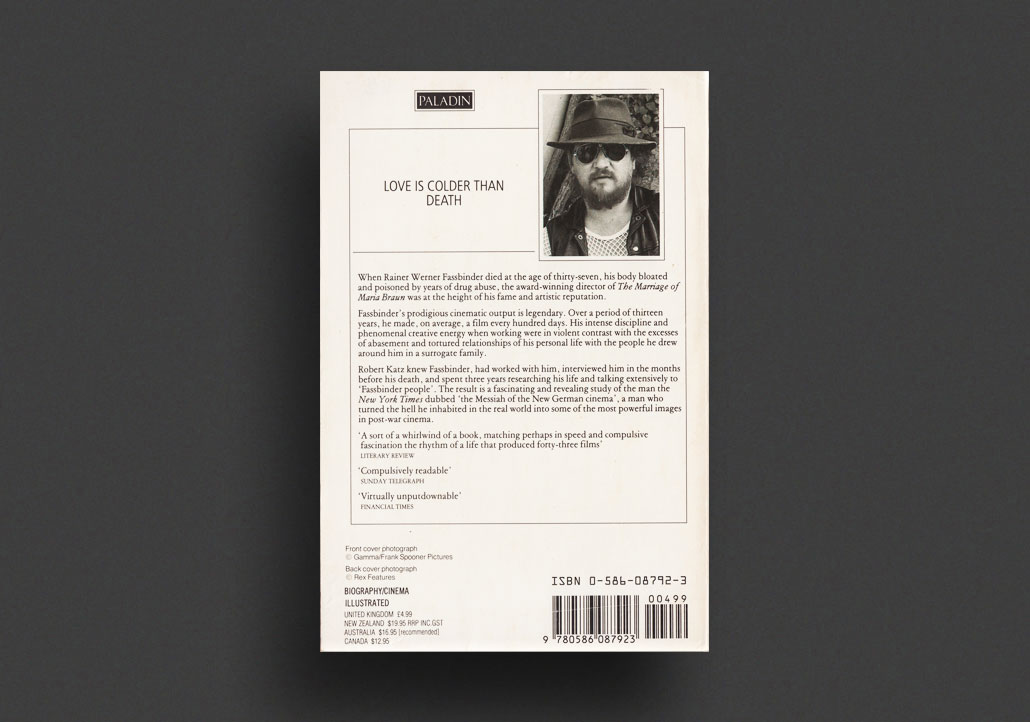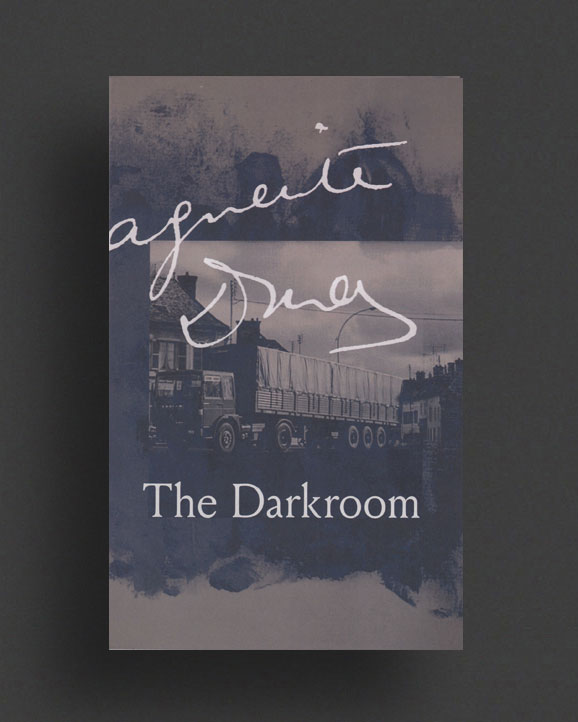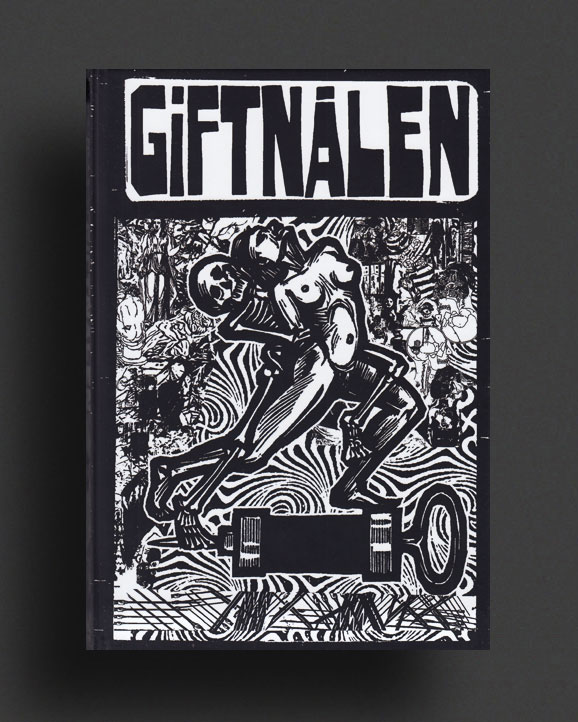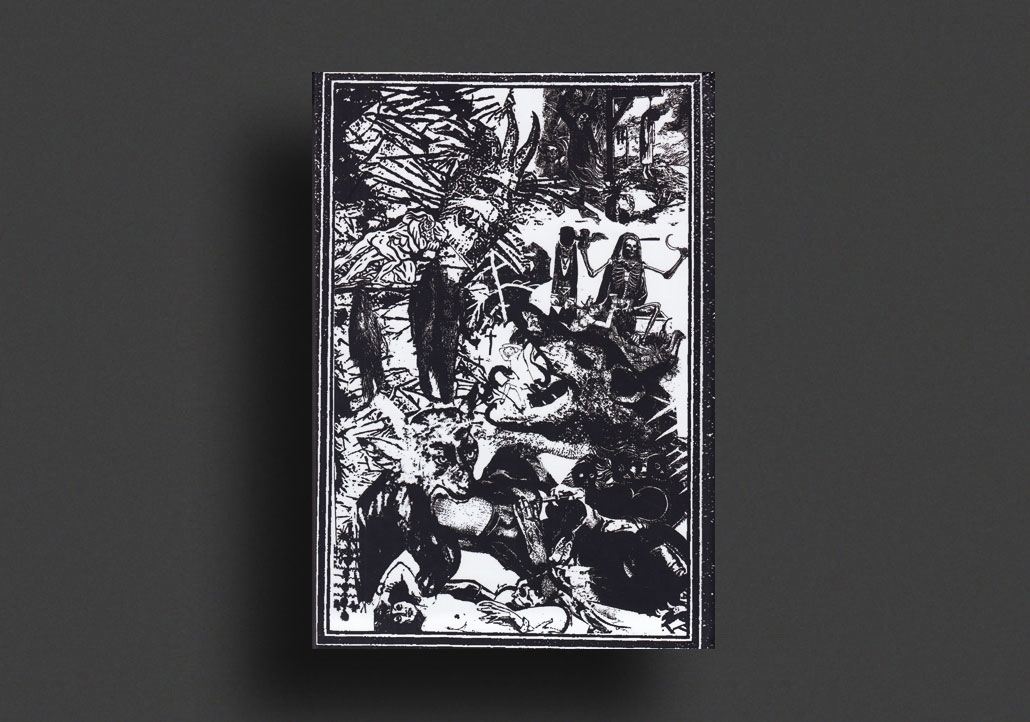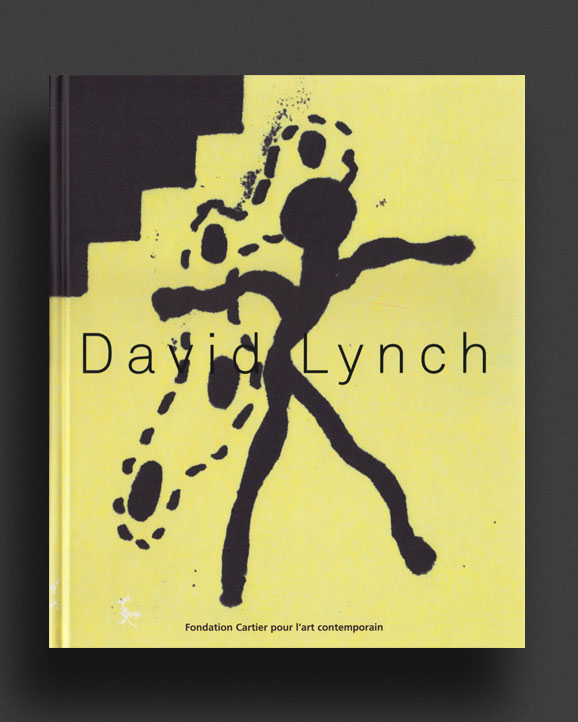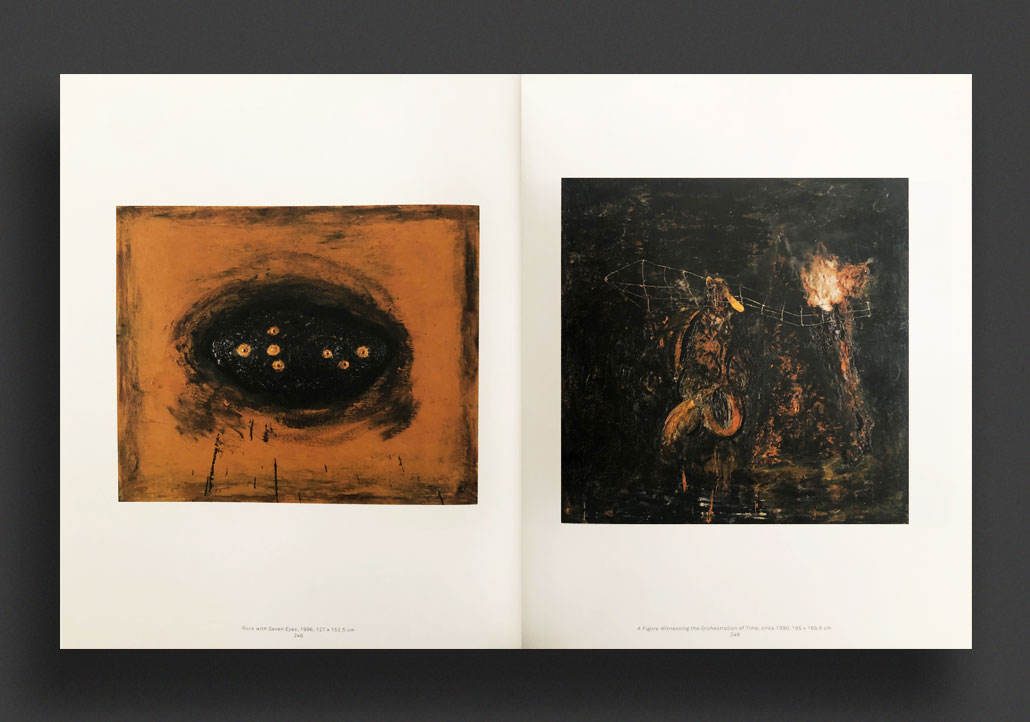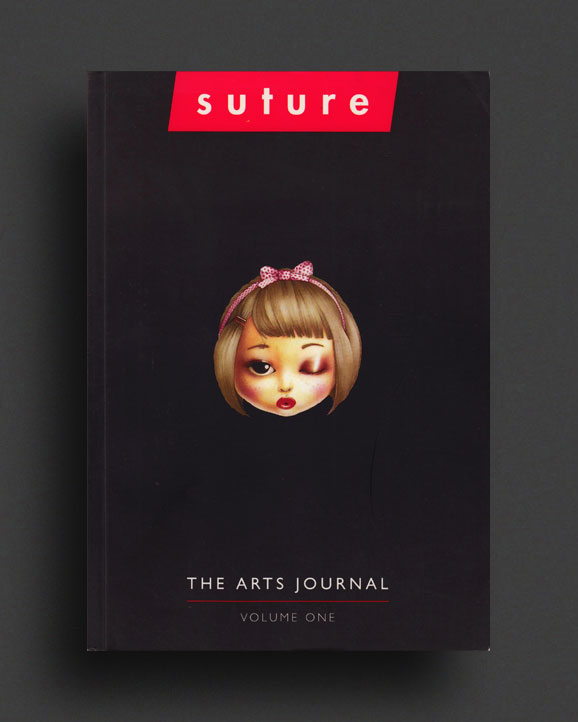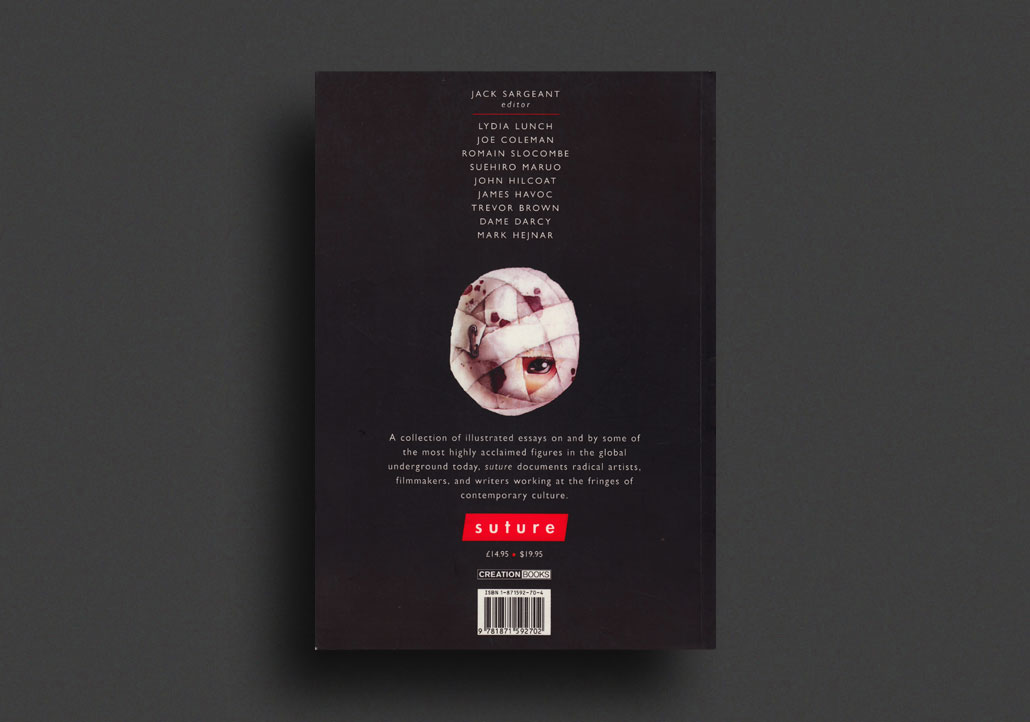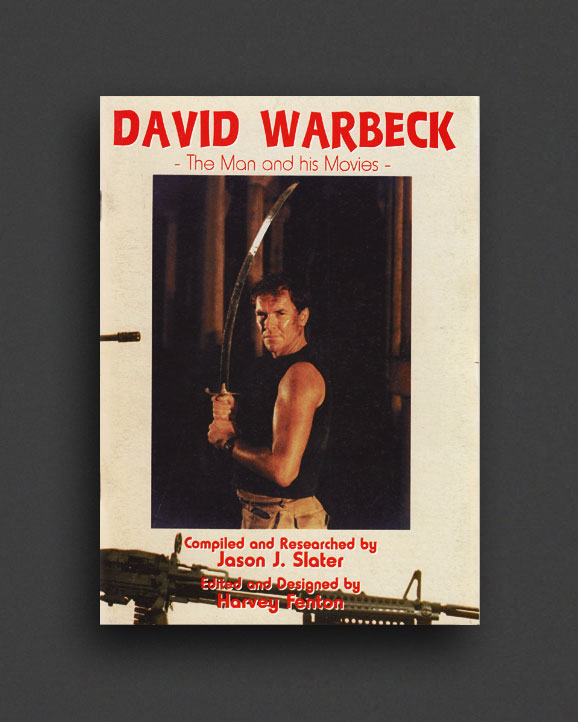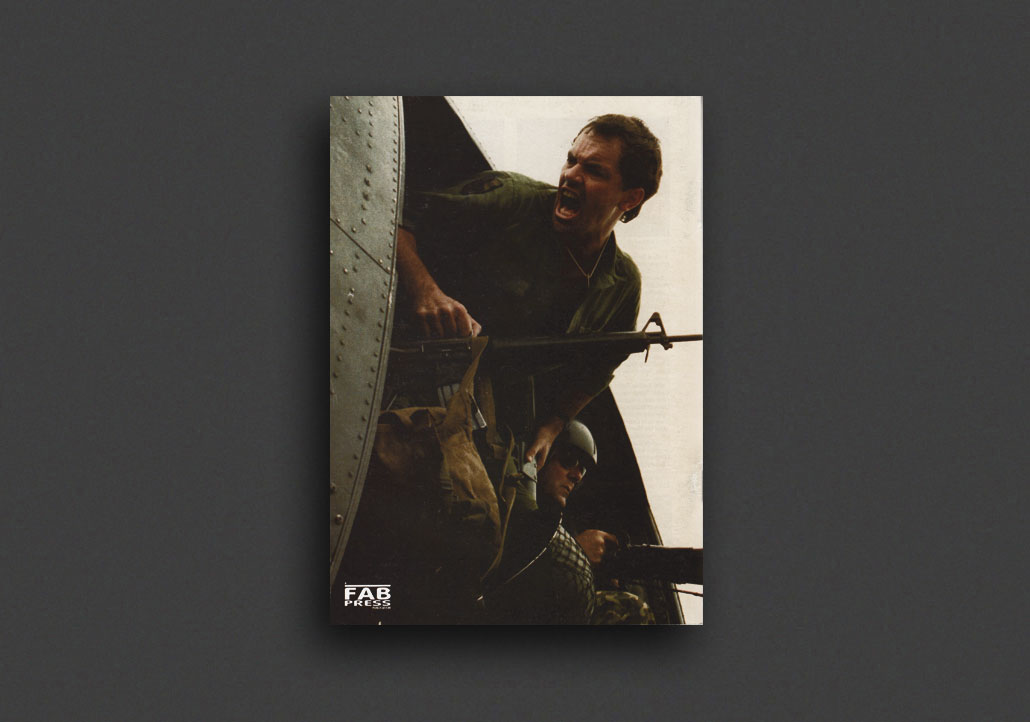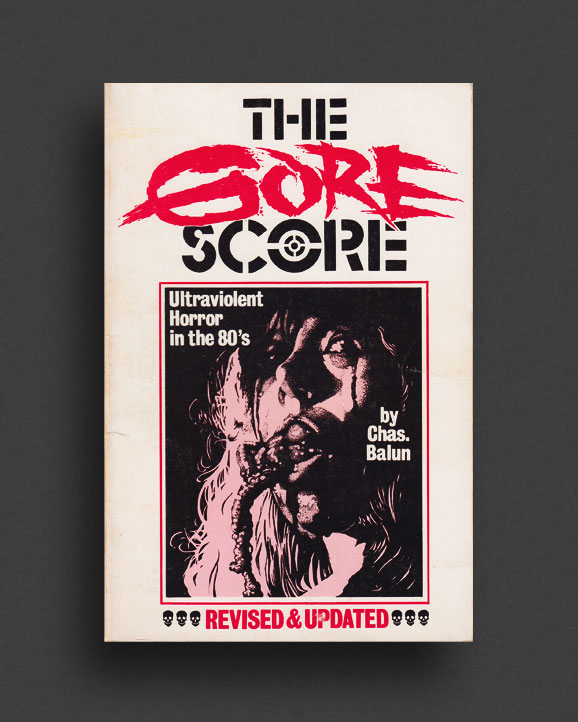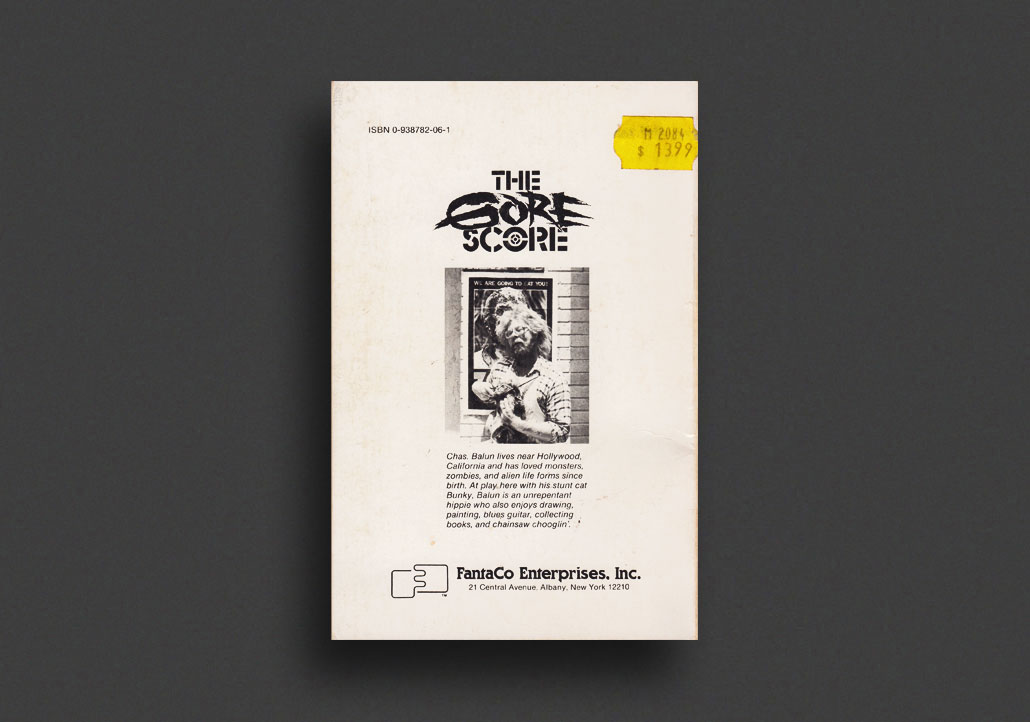(...less)
Edited and assembled by Kristian Olsson. Almost an encyclopedia of esoteric knowledge, dark music and arts and much beyond! Book-format publication dealing with all kinds of apocalyptic culture, anarchic rants, archaic sorcery, damned poets, esoterrorist tactics, forbidden knowledge, libertine lusts, necromantic collages, oneiric musings, outlaw occultism, perversion, sinister arts and visual expansionism. Giftnålen is the foul arts journal for death-obsessed brutes and society’s outcasts. Revel in amoral excesses through 480 pages. Sit back and enjoy reading while this world burns. A total derangement of the senses. Heavily illustrated with tons of exclusive and rarely seen material.
Harking back to the days of the late 1980s-early 1990s in terms of diversity of content, drawing inspiration from underground books & publications such as Amok, Esoterra, Exit, Force Mental, Pandemonium, Rapid Eye Movement, Svarta Fanor and so on. Giftnålen takes it next level and further into unknown territory.
Including passages, large or brief, dealing with:
Sigvard Nilsson Thurneman & Den Magiska Cirkeln, ”Thurneman & Liemannen from the perspective of a LHP initiate” by Johannes Kvarnbrink, “The Vultures of Sala”, Georges Bataille & the Acephale society, ”Death and Night and Blood: Yukio Mishima & the Asceticism of Japanese Death-Aesthetics”, ”Hatets sånger” by Leon Larsson, ”Hyoscyamus Nigredo: From Silver Into Lead”, “Manhunter: Thurneman – Occultist & Serial Killer” by Wulvaricht, ”The Devil in Delgada: The Strange & Unusual Lives of Johnny Bode & Tom Zacharias”, ”11.000 Days in Säter: Från Dårhus till Bårhus”, ”The Sense of Bel-Longing” poem by Julian Theurgen, “The Thurneman improvisations” by Sten Röse, “Sigvards sterbthaler”, ”The Triumph of Death” by Alberto Caraco, SalaSatanskin, Judas Ekholm, ”The Poisonous Needle: Esoterrorist Credo of the Sinister Outlaw”, ”Salaligan: Tools of the Trade”, melancholia, Benjamin Christensen’s Häxan over a hundred years, De Strigmagarum Daemonique Mirandis, ”The Curse of the Third Eye”, ”Fem-femmornas fotbollsmatch: criminal all-stars Thurneman, Salaligan & Johnny Bode teaming up against the screws at the Långholmen prison”, Tillbergamördaren, Renzo Novatore, ”Teurgisk Terrortantra: Photos by MalFiore di Fiele & Frida Ghiozzi (Omega Kunst)”, ”The Poetic Tradition of Swedish Melancholia: A Portrayal of Dismal & Unfortunate Death-seekers in the ruinous Land of the Midnight Sun”, Nattmaran, ”Lasse Lucidor – the Unfortunate: Rusets och ruelsens skald”, Erik Johan Stagnelius – Dweller in the Arms of Putrefaction, Plato, Dante, ”Iatromantis: To Die Before You Die”, Meister Eckhart, Parmenides, the Upanishads, Djävulsbrand, Styggen, underworldly descent, Peter Kingsley, ”Avfyrning!”, Ecstasies, The Death Principle, ”Henbane: Saturnalia Poison” & ”A Woodland Sitting” by Sentinessence, ”The Linkola Legacy”, Apocalypse Culture, Deep Ecology, Oscar Wilde, Max Stirner, Ingmar Bergman, Albert Camus, ”Killing Cults & Their Slaves” reflections by Charles Manson (exclusive text submitted by ATWA/ATWAR), “Red & Blue”, ”Ashen Synchronicities”, haruspex of criminal gnosis, ”Meeting with a Remarkable Man: An Interview with Nikolas Schreck”, Spiritual Warriorhood in the Age of Dissolution, Initiatory Mysteries in the Temples of Karnak, The Faustian Quest, Charlatans of Occulture, Vama Marg, Esoteric Tantric Buddhism, The Three Poisons, Solitude & Subtraction, The Process Church of Final Judgement, Scientology, ”Counter-Culture”: A Fly Entangled in the Webs of Maya, luddite poetry, The Manson-File: Myth and Reality of an Outlaw Shaman, Eros & Thanatos, Storms of Sethian Liberation, ”Abraxas & His Mysteries: The Forgotten God & the Hidden Nature of Reality”, Abraxas in Hesse’s ”Demian”, extract from ”Opposition is True Friendship” – Karl NE on Abrades, D.H. Lawrence ”Taos”, The Abraxas Foundation, Michael Moynihan, Boyd Rice, ”Monarchie Infernale: The Occult History of the Royal Court and the Aristocratic Elite in Sweden during the Gustavian Era”, ”Of Blind Men & Occult Forces”, Blutleuchte, “The Hearts of Kings” Ajna Offensive, Descent magazine, Lightbringers of the North, Gustav Biörnram – necromancer of the Swedish king Gustav III, The Kingdoms of Elgaland-Vargaland, ”Nekromantiens: Riter vid Sankt Johannes Kyrkogård”, Andrew Chumbley, Algolagonia, The Malleus Maleficarum: Europe Overshadowed by the Hammer of Witches, The Gates of Hell Opening in Copenhagen, La sorcière, ”Method for Achieving Communication with Spirits” translated notes from the necromantic conjurations of Gustaf Björnram, ”Carl August Ehrensvärd & Den Esoteriska Kretsen: Eleusinian Mysteries & Orphic Hymns in the Mythological Labyrinth”, Gottfried Benn, ”The Mystical Signatures of Adolph Falkenberg”, Gustaf Adolf Reutersholm, Den Esoteriska Kretsen, Sophia Perennis, René Guenon, J.W. von Goethe, Oswald Spengler, ”Death to those who seek false comforts” by Erica Frevel, ”In the Midst of Life, We are in Death”, ”Riddles of the Sevenfold Way”, Anton Long, Algernon Blackwood, ”The Man Whom the Trees Loved”, Richard Moult, Michael Morthwork,”The Ordeal of the Abyss: Interview with Christos Beest”, ”From Ancient Gods into New Devils”, Wotan, self-sacrificial offerings, burial traditions, black magic rites, C.S. Lewis, Guido Cernonetti, Man Ray, BDSM, Aldous Huxley, Octave Mirabeau, Ambrose Bierce, G.I. Gurdjieff, King Gustav III, ”Ernst Wagner against the degenerate world”, ”Liber Nigri Peregrinationis: The Black Pilgrimage to Chorazaim & the Crossing of the Abyss”, Jack Parsons, Marjorie Cameron, L. Ron Hubbard, Leonora Carrington, the scholia of Nicolas Gomez Davila, Arcana Europa, Ignus Fatuus: Irrlicht, The Lunar Accomplice”, Shintoism, ”Mount Analogue & the Dark Night of the Soul”, René Daumal, Roger Gilbert-Lecomte, G.I. Gurdjieff, Saint John of the Cross, ”Behold… the Blood of the Moon”, Mircea Eliade, ”Det Sjunde Inseglet: Procession Scene”, ”H.P. Lovecraft – A Comrade of the Wolves & Rider of Nightmares”, Alain Robbe-Grillet, ”Mysterium Tremendum: An interview with Carl Nordblom”, “Det skälvande mysteriet”, infernal pacts, criminal gangs of Sweden, secret brotherhoods, the UR Group, Ezra Pound, August Strindberg, from “On the Heights of Despair” by Emil Cioran, self-transformation, Hanon-Tramp, Henri Fuseli, ”The Dawning New Days of Defeat”, Hagakure, ”Mishima on Death in the Modern Age”, Ba Ra Ken: Ordeal of Roses, Eino Leino, Ulrike Meinhof, Holger Meins, “Bo Ignatius Cavefors landstigen på Dödens ö”, Alexandra David-Neel, Janne Bergquist: an open cancerous wound on the body of society, Autonomisk Manual, Kenneth Anger, Sir Augen Goosens, the Anarchs-Futurist Manifesto, Ernest Coeurderoy, the Kindred of the Kibbo Gift, Antonin Artaud, Marquis de Sade, Set Teitan, Paul Verlaine, Guido von List, The Rise and Fall of Hanussen – Occult superstar of the Interwar Period: Charlatan from the Finee Salons of Berlin to Feeding a Family of Badgers, Zos Kia, Paul Wegener, ritual bloodletting, Austin Osman Spare, Aleister Crowley, Christos Beest, Carl von Linné, Boyd Rice, Nikanor Teratologen, Melek Taus of Holland, Stanislaw Przybyszewski, Mensur scarification – A Rite of Passage in 20th century Europe, yoga practices with Che Guevara, ”Frank Braun: Devil hunter or doppelgänger?”, Blood mysticism & Teutonic Vampirism, Viktor Rydberg on the Mandragora, ”The Curse of Nosferatu: Fraternitas Saturni’s Master Pacitus & Prana Film”, Ernst Jünger ”Sicilian Letter to the Man in the Moon”, ”Female nomad decadents of the Ferkel Circle”, Frida Uhl, F.T. Marinetti, ”Blast of the Vortex Campaign: Ezra Pound, W.B. Yeats & Wyndham Lewis”, Vienna Actionism, Odd Nerdrum, Andreas Baader, Night of Death in Stammheim, Liesmac of the Deverills, Ola Hansson: Pariah among outcasts, Edward Munch, Martin Heidegger, Jean Genet, insurrection, suicide as an ultimate revolutionary act, Peryt Schou & the Awakening of the Logos, Arte de Maleficium: Works of Art as Regicide, Gustav Meyrink, Ilna Ewers-Wunderwald – Alraune des Jugendstils, Stefan Eggier, Mahlon Blair, Karl Hans Strobl, Degenerate Germany: Perversion for Profit in the Weimar Republic, Human Sacrifice at the Magic Island Haiti, ”William Buehler Seabrook: Transcending All Transgressions”, sadomasochism, tantric masters, ”Three Tongue-less Mouths” by C. Nordblom, Maya Deren, ”The Sacred as Transgression: Roger Callois”, ”Lupercalia to Liberalia: An Extract from The Antichrist Phallus” & ”The Rustic Rite of the Wolf-Owl” by Wyrd Isle Collective, ”Grave-robbing in the Towers of Silence with Sven Hedin”, “Disciples of ‘Bone: The Dispossessed Sons of Albion”, Citipati and Kangling, ”The Minstrels of Misrule”, the Green Man, ”Mythos of Masked Gods and Mummering Men”, Kenneth Grant, Styggelser: Black Metal Abominations, Externsteine, J.G. Ballard, The Panic Movement, the Promethean flame, gnosticism, Roland Topor, Fernando Arrabal, William Ouidhuis’ Katabol, Abefko Nord: the volcanic island Alnö, Saint Antonius, the werewolf in Scandinavian mythology, Perun, the Cult of Dionysos, ”Apocalyptic Collisions of Tradition & Modernity in a Perpetual Dark Age”, Alejandro Jodorowsky’s Psychomagic, Foucault, Fulcanelli & the Mystery of the Cathedrals, ”Play the King for a day…”, ”Rex Nemorensis: The Killing of the Divine King”, The Golden Bough, The Cultural Terrorist Manifesto, Sturm und Drang, tjyvheder, prison life, mythopoetic imagination, Carl Larsson’s “Midvinterblot”, Gösta Werner’s “Midvinterblot”, the cult of Frö, Nordic death cults, Lucia – Progenitress of Demonic Entities, álfar, ”Narcocultura Necromanteia: Criminal Devotees among the Cult of the Holy Death”, Liber Falxifer, Necrosophy, Santa Muerte / San La Muerte, Nyhamnskifte, In the Hoofprints of the Nordic Devil, The Thirteenth School and the Black Priests of Satan, Carl Gustav Jung & the Shadow, Herr Ola i Trång & Gammal-Sjul, Kyrkogrim, Kvick i jord, Created from the Shadow of God, Svartkonst: Nordic necromancy & nigromancy, Hultkläppen, the Hand of Glory, Tjuvljus, The Spiritus Familiaris & the Arcanum of Human Blood, do-it-yourself instructions for the making of ”bjäran”, Paracelsus, ”Den Ryktbara Trollpackan Kapten Elins förmenta resor till Blåkulla och Bekantskap med Djefwulen”, Hyltén-Cavallius ”Wärend och Wirdarne”, småfiffel, The Arcane and Forbidden Wisdom of Nordic Sorcery found in the Scandinavian books of the black arts, rare archive photographs of Nordic sorcerers and witches, Sanguine Vociferation, Ichor, Aztec blood rituals, Vampirism at the Execution site, Red & White: Shakti & Shiva, menstrual blood magic, Significance of “Red / Blue / Purple Wings” to the 1%er, Mandragora Officinarum, “Stä blod”, Aristocracy of the Soul: the warrior poet Gabrielle D’Annunzio, the anarchic republic of Fiume, Kapala & Damaru, ”Pierre Drieu la Rochelle: Drawn Towards Death Like a Moth Towards the Flame”, cyanide, Chhinnamasta: Acephalic Goddess of Paradoxes, Tantric graveyard meditations, ”Åderlåtning & blodmat”, Doktor Mabuse, Isidore Lucien Ducasse, Macabre Ritual Feasts of Freemasonry, Consanguinity, Offerings to the Dark Gods, the Necromancy of Erichto, Nikanor Teratologen: Dissekerande definitioner, Frithjof Schoun, female domination, Hermann Hesse, Dalai Lama, Miguel Serrano, Mithraic mysteries, Apolitea, ”Saint Sebastian: The Twice Martyred”, The Pagan Ways of emperor Diocletian, Aum: Suck on Sarin, The Electronic Revolution, Word Virus, cultural terrorism, artificial intelligence, psychoactive plants, Cimicidäemones: Bedbugs making your deathbed, ångerstål, vådastål, Nordic Sorcery, Demons of the Flesh, Gamen, opium dreams, godetia, demonomania, simulacra, Ted Kaczynski, the Unabomber, Ned Ludd, MK Ultra, Jünger’s “Psykonauterna” & “Visit to Godenholm”, Executioners swords towards Externsteine, Herman Wirth, Pervitin, perversion, murder weapons & tools of self-wasters as magic objects, borrowing bones from the dead, the Witch of Endor, “Omne malum ab Aquilone: All Malice travels with the North Wind”, The Wild Hunt, the Nine Galder songs, Gullveig / Heid, Canon episcopi, The Death-Horse of Horatius, Donar’s Oak, Ulvhednar, varg-i-veum, Vánagandr, LSD-25, Psilocybe Semilanceata, instruments made from human remains, Nattmannen, rackaren, The Corpse Hounds of Hel, Hector Meinhof, brewing beer on a severed human hand, the secret Vehmic courts, Barcode or Branding? Welcome idiot to the Grave New World!, Unfolding the Blood-Eagle, Metaphysics of Death, Mjältsjuka: The Black Bile, Descent into Hades, Ancient Greece, Man is a God in Ruins, leaderless resistance, Aghori devotees, Akeldama: Field of Blood, Pauper’s Graves Bonehouses as a Sanctum for Equality in Death, ”The Infernal Trinity: Reinterpreting the Sinister Imagery of the Prior Leschman Chapel” by Christopher Walton, ”Hornet och smörjan: Early Use of Psychedelic Drugs & Poisonous Plants among Witches & Sorcerers in Europe”, derangement of the senses, pitchfork-riders, fence-riders, Nordic shamanism, sabbatic craft, sublimation through filth, sacred prostitution, Jukka Siikala, dead rats, the path of Kaulamarga, ”Ecstatic Inferno Visions & Thanatomaniac Excesses: South-East Asia as seen through the feverish glass-eye of an exile-European death-seeker / The Documentary Photography of Stephen Bessac”, Hunting Asia, Deathlust, Maison Close, mondo movies, Pakito Bolino, Le Dernier Cri, Narok, Thai Buddhist hell theme parks, Asubha – meditations on the foulness of the human body, MS13, mortuary cults, Nicholas Roerich, Agni Yoga, Helena Petrovna Blavatsky, Tibet, Bodhisattva Maitreya, Bolshevik supersoldiers perfected through Kalachakra Tantra, ”Onwards to Shambhala: The Path towards merging with the divine fire”, the Occult Roots of Soviet, OGPU Special Department – Institute for Brain Studies & Psychic Activities, hypnosis, Barchenko, Gleb Bokii, Baron Ungern-Sternberg, the Bogd Khan, Kangchendzönga, Corto Maltese, Caucasian Ovcharkas feasting on corpses, Sven Hedin, ”Beast, Men & Gods” by Ferdinand Ossendowski, the Spear of Destiny, the Cult of the Leader & Soviet Godhood, Arctic Hysteria, pyramids near the Lake Seidozero, Yakov Blumkin, the Ancestral Research Bureau, Vril force, Odic Energy, Olaus Rudbeck & his Atlantean Uppsala, ”Among Fiddlers, Outcasts & Outlaws in Helsingia”, Karl-Max Fredrikson, the eternal return, Lim-Johan, horrid Hälsingland, Miguel Serrano, Nils-Fredrik Åkerberg & Delsboligan: ”an evil beast capable of the most heinous cruelty”, Kniven, ”Discovering a Runic Devil-Pact from the 19th Century”, the myth of Hårga, Raggare, ”Hultkläppen: A Menschenfeind in the Devil’s Service”, Pelle Schenell, Antinomian scatological tricksters – the two living legends known as ”Bajsmannen”, slagrutemän, Starsk-Pelle, Troll-Per och dömullen, det brutala Gnarp, the Nordic Yule Goat, ”Kali: The Black Mother” by Karl NE, The Art of David S. Herrerías, Karl Nachzehrer Eng – interview extract, Anckarström & the assassination of king Gustav III, freemasonry, spirit seers, Hertig Karl, Hypnosmord, ”Bones in the Wall: Enriqueta Martí – Vampire of Barcelona” by Martin Locker / Perennial Pyrenees, ”Hanns Heinz Ewers – Rider of the Germanic Nightside”, catacomb spectres, ”A Thousand Faces of Fear”, Psychonauts, smoking 77 cigarettes a day, ”The Conqueror Worm or Carrion for Worm?”, Intoxication and Art, Ewers & Alraune in Sundvall, Kristoffer Nilsson, Per Faxneld, Pan-Germanic Panic in India, Thugees, Left-Hand Path initiation, ”Bo Ignatius Cavefors – Landstigen på Dödens Ö”, Carsten Regild, Cavefors Förlag, Soma, Grymhetens Teater Dekadens, Arnold Böcklin, Infinity Land Press, Socialistische Patienten Kollektiv, Kommando Holger Meins, Odd Nerdrum, Caravaggio, the state-sanctioned murder of the Baader-Meinhof gang and their martyr hood, Christ in Gethsemane, J.H. Schönheit versus Karl XII, Oppressive Liberation Spirit – Rest in Power Sakevi Yokoyama, Self-Mortification, Ivan Agueli, Edward Munch, Arthur Moeller van der Bruck, Aleister Crowley, Thelema, Rites of the Dreamweapon: The Tremor Rite, Rangjung Rigpe Dorje, Spirit Catcher, Prussian anarchists, ”Plutarchs of the Pandemic: Lords of All Fevers & Plague”, Walpurgisnacht, Ira Cohen, Brain Damage: Sorcery as an Art, PH Kerin, Marcus Hinze, Gilles de Rats, human sacrifice, Robert Nicholas Taylor, Haiti: The Magic Island, ”Chat Control”, Quimbanda, Exu, Jesus Malverde, Svartkonstböcker, skaldic mead, the Cathars, ”The Troubadour Turned Traitor: Ezra Pound”, Bhagavata Purana, Water as a Passageway into the Underworld, Sejd Laughter, the End of the World in Nordic mythology, Nastrand – the Corpse-Shore, sacred fountains, the Great Reset, hematophilia, blood play, Günter Brus, Rudolf Schwarzkogler, guerilla tactics, The Key of Alocer, Rökkr, Cum Ingenti Priapo, pagan rites of fertility, ”The Descent of Odin” by Thomas Gray, The Galder of Death: Vallgalder, The Tree of Wyrd, ”The Nithing Pole”, land spirits, the sacrificial groves of the dead, George Sylvester Viereck, Nikola Tesla, Unamerican activities, European gothic horror literature, social credit, Daemonium Aeternus, Euronymous, Sepulchral Noise, Svarta Cirkeln, grave desecrations, death magick, Wandervögel, Emanuel Swedenborg, Julereien, De Dödas Julotta, ”Lycanthropia” by Adam Parfrey, the Equinox Event, ”On Sacrifice” by Tancredi Valeri, ”The Last Words of Louis Lingg”, Venus in Furs, Sumerian kingship, Against Control, Techniques for Cutting Up the Leviathan of Modernity, Reinventing Urban Sorcery, Subverting and Disrupting the NWO Control Mechanisms, heathen hit squads, mental illness, post-war eugenics in the Swedish demonocratic state, Trevor Brown’s Antichrist, Arturo Reghini, neo-Pythagoreanism, Bror Gadelius, complete disorientation of the senses, dissidents, heretics, deviated carnal encounters, Apotropeism, antinomianism, Guido Crepax, Alfred Kubin, Valerie der Phantasten, väggmadammer, European folklore, ”Living in the Reign of Phantoms… Saluting Death in a Rain of Bullets”, Iconoclasta, Nihilismo, Propagation by the Deed, Side Real Press, Black Widow’s Web Erotica, Michel Houllebecq, desert wanderers, Arthur Machen, Dragon Rouge, active imagination, the Revolutionary Cathechism, Devil Worship, necromantic rites, suicidal pacts, a world making its last death twitches….
SOUND:
Metgumbnerbone, The New Blockaders, Ward Phillips, Vivenza, G.I.S.M, Criminal Party, Grim, White Hospital, Basilisk, John Duncan, Paul Hurst, Beast 666 Tapes, Linekraft, LSD (Japan), John Murphy, Lily Vice & Lust Vessel, Nord, Ultra, Art Into Life, Ramleh, Sir Ashleigh Grove, Organum, Con-Dom, The Grey Wolves, Opera for Infantry, Death in June, Allerseelen, Zero Kama, Korpses Catatonic, Cthulhu Records, Masstishaddhu, SPK, Citipati, Peter Zincken, Sedayne, Nåstrond, Thurnemans, Salaligan, Klinik (the Swedish), Hyoscyamus Niger, Amebix, Hijokaidan, Irkallian Oracle, D-C Pöbeln, Brighter Death Now, Spacemen 3, Agitation Free, Mortuus, Genocide Organ, Johnny Bode, Lapp-Lisa, Tom Zacharias, Blood Axis, Blood Ov Thee Christ, Alfarmania, Masami Akita & ZSF Produkt, Tony Conrad, Tone Generator, RJF, Joy Division, Rune Lindblad, Åke Hodell, Geto Boys, Etat Brut, The Curfew Recordings, Tower Transmissions, Come Organisation, H.N.A.S, Mixed Band Philanthropist, Bladder Flask, Leif Thuresson, Galme, Asmus Tietchens, Noisextra radio show, Putrefier / Birthbiter, Die Form / Bain Total, Club Moral, Iannis Xenakis, Terry Riley, Lou Reed’s Metal Machine Music, Dadarotator, Kickback, Survival Unit, Bizarre Uproar, Striktlickers, United Dairies, Brainticket, AQM, S.K.V. Null, Premature Ejaculation, Aghast, The Folding Staircase, Monte Cazazza, Aussaat, Totalitär, Beast 666 Tapes / Hate Song, Clandestine Blaze, Vice Squad, Night Wolf, O’Nancy in French, Blod (Gnarp), Lille Roger, Missbrukarna, Samla Mammas Manna, Cromagnon, Taj Mahal Travellers, CM von Hausswolff, Leif Elggren, Coil, Citipati, Martin Bladh, Perdition Hearse, the true Mayhem, Blue Öyster Cult, Blasphemy, Sodom, Treriksröset, Proiekt Hat, Taint, Slave State, Ernte, Psychic TV, Monte Cazazza, Angus MacLise: Dreamweapon - The Ascension of Saint Angus of Kathmandu, LaMonte Young , Marian Zazeela, John Cale, The Dream Synicate / The Theatre of Eternal Music, Tony Conrad, The Velvet Underground, Corpse Molestation, Bestial Warlust, Destroyer 666, Black Hole, Mortuary Drape, Paul Chain, the Sodality, The Third Ear Band, Fata Morgana, Master’s Hammer, Hiram Gordon Wells, Vagina Dentata Organ, Unkommuniti / Black Dwarf, R&D Group 28, Throbbing Gristle, Perdition Hearse and others.
CINEMA:
Invasion of Thunderbolt Pagoda, Invocation of My Demon-Brother, Alraune, The Student from Prague, The Divine Horsemen: The Living Gods of Haiti, Blood On Satan’s Claw, The Wicker Man, Roger Corman’s E.A. Poe adaptions, Eyes of Fire / Cry Blue Sky, Born of Fire, Wickedness of the Wyrdful Ways: Obscure Treasures from the Catacombs of Occult & Otherworldly Cinema, ”The Devil’s Devilry” (Ken Russell’s the Devils), Le Feu Follet, ”Folk horror – a Eurocentric phenomena?”, ”This ain’t the summer of love” – Altamont & Performance, Incubus, Right Brain Video, Junk Films – the Collected Short Shockumentaries of Tsurisaki Kiyotaka, …hanno cambiato faccia, Baba Yaga, Don’t Deliver Us From Evil, Lost Paradise: Riding Habit Harakiri, Faccia di Spia, Sukkubus – the Devil in the Body, psycho-sexual arthouse cinema of oneiromantic libertines, La sorcière, Häxan – Witchcraft through the Ages, Trans-Europe-Express, Belladonna of Sadness, L’Eden et après, Glissements progresses du plaisir, Louis Mallet, Det Sjunde Inseglet, Ingmar Bergman, Survival Research Laboratories, The Other Side of Madness, Hagazussa, A Field in England, Kill List, High Rise, Åsa-Nisse, Viva La Muerte!, Cinema as Resistance in Fascist Spain, I will walk like a crazy horse, Tombs of the Blind Dead, Who Can Kill a Child?, Last House on Dead End Street, David Cronenberg, Brion Gysin, Bizarre / The Secrets of Sex, Anthony Balch, Red Baron Entertainment, Jack Smith, Stan Brakhage, Coto de Caza, Naked Lunch, William S. Burroughs, Freaks, Towers Open Fire, The Bell from Hell, The Killer of Dolls, Murder in a Blue World, Eloy de la Iglesia, Cannibal Man, the Glass Ceiling, Animales Racionales, Themroc, Beast in the Heat, Leon Klimovsky, Paul Naschy, Night of the Walpurgis, The Werewolf & the Yeti, The People Who Own the Dark, Horror Rises from the Tomb, Rebellion of the Dead, Abefko Nord, Hunchback of the Morgue, Faust: eine Deutsche Volkssage, Night of the Sorcerers, ”Shape-shifters & the Silver Globe”, Lokis: A Manuscript of Professor Wittenbach, Andrzej Zulawski, Diabel, Possession, On the Silver Globe, The Tragedy of Macbeth, Black Sabbath, Viy, Tilbury, Rat Savior, Svesto Mesto, the New Wave of Czechoslovak Cinema, True Gore, The Cremator / Spalova mrtvol, Lars von Trier’s Riget, Valerie & Her Week of Wonders, Kurototage: Black Lizard, Afraid to Die, Móju: Blind Beast, Femina Ridens, The Rite of Love and Death, Mishima: A Life in Four Chapters, The Annunciation, How to Become a God, Dark Shadows, Blade Runner, Night Tide, Invocation of My Demon’s Brother, In Satan’s Name, Konstantin Sergeyevich Lopushansky, Letters from a Dead Man, Visitor to a Museum, Andrej Tarkovskij, Stalker, History of the Arkanar Massacre, Satanico Pandemonium, Alucarda, The Mansion of Madness, Lunacy, El Topo, Fando y Lis, Legend of the Witches, The Judgement of Albion, Nosferatu – eine Symphonie des Grauens, ”Arcane Incantations: The Alchemic Cinema of Pupi Avati”, Zeder, The House with the Laughing Windows, Saló – The 120 Days of Sodom, L’arcano incantatore, Arcana, Luis Buñuel, Robin Redbreast, Whistle and I’ll Come to You, True Gore, Penda’s Fen, Scum, Made in Britain, Apocalypse Now, Gösta Werner’s Midvinterblot and more beyond what the eye perceives.
The overwhelming interest in the book has resulted in the first hundred copies selling out within less than a day.
File under:
Korm Plastics / Netherlands
Art
Film / Video
Sound / Music
Counterculture
Transgressive / Visceral / Abject
Periodicals
Occult / Esoterica
Crime / Violence
Eros
Fetishism / BDSM
Fiction / Poetry
Literary Theory / Semiotics / Language
Weird / Speculative / Science Fiction
Theory / Essay
Ancient / Medieval / Gothic
Performance / Dance / Theater




















































































































































